328 papers:
 CASE-2015-SundarkumarRNG #api #detection #machine learning #modelling #topic
CASE-2015-SundarkumarRNG #api #detection #machine learning #modelling #topic- Malware detection via API calls, topic models and machine learning (GGS, VR, IN, VG), pp. 1212–1217.
 DocEng-2015-AtenciaDG #linked data #open data #question #what
DocEng-2015-AtenciaDG #linked data #open data #question #what- What Is This Thing Called Linked Data? (MA, JD, PG), pp. 233–234.
 SANER-2015-LaverdiereBM #analysis #composition #graph #using
SANER-2015-LaverdiereBM #analysis #composition #graph #using- Taint analysis of manual service compositions using Cross-Application Call Graphs (MAL, BJB, EM), pp. 585–589.
 SAS-2015-RapoportLT #analysis #correlation #data flow #precise
SAS-2015-RapoportLT #analysis #correlation #data flow #precise- Precise Data Flow Analysis in the Presence of Correlated Method Calls (MR, OL, FT), pp. 54–71.
 CSCW-2015-WieseMHZ #quote
CSCW-2015-WieseMHZ #quote- “You Never Call, You Never Write”: Call and SMS Logs Do Not Always Indicate Tie Strength (JW, JKM, JIH, JZ), pp. 765–774.
 LCT-2015-Ai #automation #detection #fault #feedback #generative
LCT-2015-Ai #automation #detection #fault #feedback #generative- Automatic Pronunciation Error Detection and Feedback Generation for CALL Applications (RA), pp. 175–186.
 KDD-2015-TsengYHKC #detection #framework #named
KDD-2015-TsengYHKC #detection #framework #named- FrauDetector: A Graph-Mining-based Framework for Fraudulent Phone Call Detection (VST, JCY, CWH, YK, KTC), pp. 2157–2166.
 SEKE-2015-PereiraSA #interface #sql #standard
SEKE-2015-PereiraSA #interface #sql #standard- Endowing NoSQL DBMS with SQL Features Through Standard Call Level Interfaces (ÓMP, DS, RLA), pp. 201–207.
 PPDP-2015-Schmidt-Schauss #call-by #functional #semantics
PPDP-2015-Schmidt-Schauss #call-by #functional #semantics- Improvements in a functional core language with call-by-need operational semantics (MSS, DS), pp. 220–231.
 TLCA-2015-GuerrieriPR #call-by #standard #λ-calculus
TLCA-2015-GuerrieriPR #call-by #standard #λ-calculus- Standardization of a Call-By-Value λ-Calculus (GG, LP, SRDR), pp. 211–225.
 ESOP-2014-CrubilleL #bisimulation #call-by #on the #probability #λ-calculus
ESOP-2014-CrubilleL #bisimulation #call-by #on the #probability #λ-calculus- On Probabilistic Applicative Bisimulation and Call-by-Value λ-Calculi (RC, UDL), pp. 209–228.
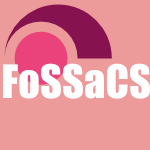 FoSSaCS-2014-CarraroG #call-by #semantics
FoSSaCS-2014-CarraroG #call-by #semantics- A Semantical and Operational Account of Call-by-Value Solvability (AC, GG), pp. 103–118.
 FoSSaCS-2014-Tsukada0 #call-by #complexity #model checking #source code
FoSSaCS-2014-Tsukada0 #call-by #complexity #model checking #source code- Complexity of Model-Checking Call-by-Value Programs (TT, NK), pp. 180–194.
 IFL-2014-FredrikssonGW #higher-order #towards
IFL-2014-FredrikssonGW #higher-order #towards- Towards native higher-order remote procedure calls (OF, DRG, BW), p. 10.
 CHI-2014-BohmerLGBK #design #smarttech
CHI-2014-BohmerLGBK #design #smarttech- Interrupted by a phone call: exploring designs for lowering the impact of call notifications for smartphone users (MB, CL, SG, DPB, AK), pp. 3045–3054.
 LCT-TRE-2014-IshikawaAKSTD #learning #process #self #student
LCT-TRE-2014-IshikawaAKSTD #learning #process #self #student- Sustaining Outside-of-Class CALL Activities by Means of a Student Self-Evaluation System in a University Blended Learning EFL Course (YI, RAY, MK, CS, YT, MD), pp. 146–154.
 LCT-TRE-2014-Tobita #education #effectiveness
LCT-TRE-2014-Tobita #education #effectiveness- Developing an Effective ESP Curriculum Integrating CALL (RT), pp. 328–338.
 LCT-TRE-2014-Ward #human-computer #requirements
LCT-TRE-2014-Ward #human-computer #requirements- HCI Requirements for Young Primary School CALL Learners (MW), pp. 339–348.
 CIKM-2014-OchiaiKT #case study
CIKM-2014-OchiaiKT #case study- Re-call and Re-cognition in Episode Re-retrieval: A User Study on News Re-finding a Fortnight Later (SO, MPK, KT), pp. 579–588.
 ICPR-2014-ColonnaCN #approach #distributed
ICPR-2014-ColonnaCN #approach #distributed- A Distributed Approach for Classifying Anuran Species Based on Their Calls (JGC, MC, EFN), pp. 1242–1247.
 SEKE-2014-WanZWS #analysis #graph #performance #points-to
SEKE-2014-WanZWS #analysis #graph #performance #points-to- Efficient Points-To Analysis for Partial Call Graph Construction (ZW, BZ, YW, YS), pp. 416–421.
 ECOOP-2014-AliRLDT #graph #scala #source code
ECOOP-2014-AliRLDT #graph #scala #source code- Constructing Call Graphs of Scala Programs (KA, MR, OL, JD, FT), pp. 54–79.
 Onward-2014-SamimiDOWM #call-by
Onward-2014-SamimiDOWM #call-by- Call by Meaning (HS, CD, YO, AW, TDM), pp. 11–28.
 OOPSLA-2014-ZhaoWZDSSW #automaton #predict #probability #sequence
OOPSLA-2014-ZhaoWZDSSW #automaton #predict #probability #sequence- Call sequence prediction through probabilistic calling automata (ZZ, BW, MZ, YD, JS, XS, YW), pp. 745–762.
 PPDP-J-2012-LagoP14 #call-by #dependent type #linear
PPDP-J-2012-LagoP14 #call-by #dependent type #linear- Linear dependent types in a call-by-value scenario (UDL, BP), pp. 77–100.
 FSE-2014-NguyenKN #embedded #graph #web
FSE-2014-NguyenKN #embedded #graph #web- Building call graphs for embedded client-side code in dynamic web applications (HVN, CK, TNN), pp. 518–529.
 FSE-2014-XuanODF #congruence #developer #graph
FSE-2014-XuanODF #congruence #developer #graph- Focus-shifting patterns of OSS developers and their congruence with call graphs (QX, AO, PTD, VF), pp. 401–412.
 CGO-2014-ChabbiLM #tool support
CGO-2014-ChabbiLM #tool support- Call Paths for Pin Tools (MC, XL, JMMC), p. 76.
 CGO-2014-LiWWHX #adaptation #encoding
CGO-2014-LiWWHX #adaptation #encoding- Dynamic and Adaptive Calling Context Encoding (JL, ZW, CW, WCH, DX), p. 120.
 CGO-2014-ZengR0AJ0 #encoding #named #precise #scalability
CGO-2014-ZengR0AJ0 #encoding #named #precise #scalability- DeltaPath: Precise and Scalable Calling Context Encoding (QZ, JR, HZ, NA, GJ, PL), p. 109.
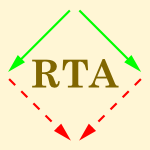 RTA-TLCA-2014-Schmidt-SchaussS #call-by #λ-calculus
RTA-TLCA-2014-Schmidt-SchaussS #call-by #λ-calculus- Applicative May- and Should-Simulation in the Call-by-Value λ Calculus with AMB (MSS, DS), pp. 379–394.
 CSEET-2013-PenzenstadlerMH #industrial
CSEET-2013-PenzenstadlerMH #industrial- University meets industry: Calling in real stakeholders (BP, MM, PH), pp. 1–10.
 CHI-2013-JacksonB #framework
CHI-2013-JacksonB #framework- Infrastructure and vocation: field, calling and computation in ecology (SJJ, SB), pp. 2873–2882.
 DUXU-CXC-2013-WilleMM #mobile #prototype
DUXU-CXC-2013-WilleMM #mobile #prototype- A Mobile Prototype for Clinical Emergency Calls (CW, TM, AM), pp. 480–487.
 HCI-AMTE-2013-TruePF #education #human-computer
HCI-AMTE-2013-TruePF #education #human-computer- Confabulation in the Time of Transdisciplinarity: Reflection on HCI Education and a Call for Conversation (NT, JP, DF), pp. 128–136.
 HCI-UC-2013-AminJGMS #impact analysis #latency #quality
HCI-UC-2013-AminJGMS #impact analysis #latency #quality- Assessing the Impact of Latency and Jitter on the Perceived Quality of Call of Duty Modern Warfare 2 (RA, FJ, JEG, JM, TS), pp. 97–106.
 ICEIS-J-2013-SuB13a #fine-grained #graph #identification #security
ICEIS-J-2013-SuB13a #fine-grained #graph #identification #security- Foundation for Fine-Grained Security and DRM Control Based on a Service Call Graph Context Identification (ZS, FB), pp. 226–241.
 ICEIS-v2-2013-SuB #analysis #composition #data flow #graph #web #web service
ICEIS-v2-2013-SuB #analysis #composition #data flow #graph #web #web service- Service Call Graph (SCG) — Information Flow Analysis in Web Service Composition (ZS, FB), pp. 17–24.
 SEKE-2013-YoonMPP #diagrams #reverse engineering #sequence chart
SEKE-2013-YoonMPP #diagrams #reverse engineering #sequence chart- Reverse Engineering of Sequence Diagrams by Merging Call Trees (SY, SM, SP, SP), pp. 368–374.
 OOPSLA-2013-HuangB #analysis #context-sensitive grammar #memory management #performance
OOPSLA-2013-HuangB #analysis #context-sensitive grammar #memory management #performance- Efficient context sensitivity for dynamic analyses via calling context uptrees and customized memory management (JH, MDB), pp. 53–72.
 PPDP-2013-DanvyZ #call-by #evaluation
PPDP-2013-DanvyZ #call-by #evaluation- A synthetic operational account of call-by-need evaluation (OD, IZ), pp. 97–108.
 SAC-2013-ChaeKHLW #api #detection
SAC-2013-ChaeKHLW #api #detection- Software plagiarism detection via the static API call frequency birthmark (DKC, SWK, JH, SCL, GW), pp. 1639–1643.
 SAC-2013-JangKRLSKPC #api #comparison #performance #similarity
SAC-2013-JangKRLSKPC #api #comparison #performance #similarity- An efficient similarity comparison based on core API calls (MJ, JK, SR, KL, SS, AK, YP, EHC), pp. 1634–1638.
 SAC-2013-LiZSL #approach #graph #mining #named #novel
SAC-2013-LiZSL #approach #graph #mining #named #novel- WAVE-CIA: a novel CIA approach based on call graph mining (BL, QZ, XS, HL), pp. 1000–1005.
 ICSE-2013-FeldthausSSDT #approximate #graph #ide #javascript #performance
ICSE-2013-FeldthausSSDT #approximate #graph #ide #javascript #performance- Efficient construction of approximate call graphs for JavaScript IDE services (AF, MS, MS, JD, FT), pp. 752–761.
 ASPLOS-2013-CheckowayS #api #why
ASPLOS-2013-CheckowayS #api #why- Iago attacks: why the system call API is a bad untrusted RPC interface (SC, HS), pp. 253–264.
 CADE-2013-HahnleSB #reuse #verification
CADE-2013-HahnleSB #reuse #verification- Reuse in Software Verification by Abstract Method Calls (RH, IS, RB), pp. 300–314.
 ESOP-2012-ChangF #call-by #revisited #λ-calculus
ESOP-2012-ChangF #call-by #revisited #λ-calculus- The Call-by-Need λ Calculus, Revisited (SC, MF), pp. 128–147.
 ICSM-2012-KuangMHGHJE #comprehension #dependence #question #requirements #source code #traceability
ICSM-2012-KuangMHGHJE #comprehension #dependence #question #requirements #source code #traceability- Do data dependencies in source code complement call dependencies for understanding requirements traceability? (HK, PM, HH, AG, LH, JL, AE), pp. 181–190.
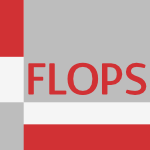 FLOPS-2012-AccattoliP #call-by #revisited
FLOPS-2012-AccattoliP #call-by #revisited- Call-by-Value Solvability, Revisited (BA, LP), pp. 4–16.
 FLOPS-2012-AriolaDHNS #calculus #call-by #semantics
FLOPS-2012-AriolaDHNS #calculus #call-by #semantics- Classical Call-by-Need Sequent Calculi: The Unity of Semantic Artifacts (ZMA, PD, HH, KN, AS), pp. 32–46.
 FLOPS-2012-TanakaK #call-by #continuation
FLOPS-2012-TanakaK #call-by #continuation- A Call-by-Name CPS Hierarchy (AT, YK), pp. 260–274.
 CHI-2012-ParkBN #how #question
CHI-2012-ParkBN #how #question- How do couples use CheekTouch over phone calls? (YP, SHB, TJN), pp. 763–766.
 ICPR-2012-DuanZRTB #automation #automaton #probability #recognition
ICPR-2012-DuanZRTB #automation #automaton #probability #recognition- Timed and probabilistic automata for automatic animal Call Recognition (SD, JZ, PR, MWT, LB), pp. 2910–2913.
 SEKE-2012-ZhangLS #graph #impact analysis #mining
SEKE-2012-ZhangLS #graph #impact analysis #mining- Mining Call Graph for Change Impact Analysis (QZ, BL, XS), pp. 7–12.
 SIGIR-2012-LimSG #on the #trade-off
SIGIR-2012-LimSG #on the #trade-off- On the mathematical relationship between expected n-call@k and the relevance vs. diversity trade-off (KWL, SS, SG), pp. 1117–1118.
 SIGIR-2012-TanGS #exclamation #identification
SIGIR-2012-TanGS #exclamation #identification- $100, 000 prize jackpot. call now!: identifying the pertinent features of SMS spam (HT, NG, MS), pp. 1175–1176.
 ECOOP-2012-AliL #graph
ECOOP-2012-AliL #graph- Application-Only Call Graph Construction (KA, OL), pp. 688–712.
 OOPSLA-2012-AusielloDFF #profiling
OOPSLA-2012-AusielloDFF #profiling- k-Calling context profiling (GA, CD, IF, DF), pp. 867–878.
 PPDP-2012-LagoP #call-by #dependent type #linear
PPDP-2012-LagoP #call-by #dependent type #linear- Linear dependent types in a call-by-value scenario (UDL, BP), pp. 115–126.
 ICSE-2012-DangWZZN #clustering #named #similarity #stack
ICSE-2012-DangWZZN #clustering #named #similarity #stack- ReBucket: A method for clustering duplicate crash reports based on call stack similarity (YD, RW, HZ, DZ, PN), pp. 1084–1093.
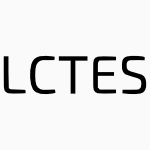 LCTES-2012-AslamBQUFTSH #design #embedded #java #stack
LCTES-2012-AslamBQUFTSH #design #embedded #java #stack- Rethinking Java call stack design for tiny embedded devices (FA, GB, MAQ, ZAU, LF, PT, CS, EH), pp. 1–10.
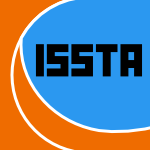 ISSTA-2012-CanaliLBKCK #detection
ISSTA-2012-CanaliLBKCK #detection- A quantitative study of accuracy in system call-based malware detection (DC, AL, DB, CK, MC, EK), pp. 122–132.
 LICS-2012-Hoshino #call-by #combinator #semantics
LICS-2012-Hoshino #call-by #combinator #semantics- Step Indexed Realizability Semantics for a Call-by-Value Language Based on Basic Combinatorial Objects (NH), pp. 385–394.
 ASE-2011-GhabiE #validation
ASE-2011-GhabiE #validation- Observations on the connectedness between requirements-to-code traces and calling relationships for trace validation (AG, AE), pp. 416–419.
 FASE-2011-ZhangZL #api #complexity #graph
FASE-2011-ZhangZL #api #complexity #graph- Flow-Augmented Call Graph: A New Foundation for Taming API Complexity (QZ, WZ, MRL), pp. 386–400.
 ICSM-2011-YousefiS #distributed #identification #mining
ICSM-2011-YousefiS #distributed #identification #mining- Identifying distributed features in SOA by mining dynamic call trees (AY, KS), pp. 73–82.
 SCAM-2011-SawinR #algorithm #graph
SCAM-2011-SawinR #algorithm #graph- Assumption Hierarchy for a CHA Call Graph Construction Algorithm (JS, AR), pp. 35–44.
 PLDI-2011-DEliaDF #mining
PLDI-2011-DEliaDF #mining- Mining hot calling contexts in small space (DCD, CD, IF), pp. 516–527.
 CHI-2011-GrandhiSJ #mobile
CHI-2011-GrandhiSJ #mobile- Telling calls: facilitating mobile phone conversation grounding and management (SAG, RPS, QJ), pp. 2153–2162.
 CHI-2011-HourcadeB #human-computer
CHI-2011-HourcadeB #human-computer- HCI for peace: a call for constructive action (JPH, NEBR), pp. 443–452.
 EDOC-2011-BalinskyPS #framework
EDOC-2011-BalinskyPS #framework- System Call Interception Framework for Data Leak Prevention (HB, DSP, SJS), pp. 139–148.
 CIKM-2011-SannerGGKK #optimisation #retrieval #topic
CIKM-2011-SannerGGKK #optimisation #retrieval #topic- Diverse retrieval via greedy optimization of expected 1-call@k in a latent subtopic relevance model (SS, SG, TG, SK, SK), pp. 1977–1980.
 ICML-2011-GerrishB #predict
ICML-2011-GerrishB #predict- Predicting Legislative Roll Calls from Text (SG, DMB), pp. 489–496.
 RecSys-2011-KnijnenburgRW #how #interactive #recommendation
RecSys-2011-KnijnenburgRW #how #interactive #recommendation- Each to his own: how different users call for different interaction methods in recommender systems (BPK, NJMR, MCW), pp. 141–148.
 ECOOP-2011-ZhangXZZC #estimation #object-oriented #source code
ECOOP-2011-ZhangXZZC #estimation #object-oriented #source code- Frequency Estimation of Virtual Call Targets for Object-Oriented Programs (CZ, HX, SZ, JZ, YC), pp. 510–532.
 Onward-2011-NevesGF #stack
Onward-2011-NevesGF #stack- Language support for asynchronous event handling in the invocation call stack (CRGdN, EMG, CTF), pp. 177–180.
 POPL-2011-RivalC #abstraction
POPL-2011-RivalC #abstraction- Calling context abstraction with shapes (XR, BYEC), pp. 173–186.
 SAC-2011-KostakisKMM #comparison #graph #using
SAC-2011-KostakisKMM #comparison #graph #using- Improved call graph comparison using simulated annealing (OK, JK, HM, KM), pp. 1516–1523.
 SAC-2011-LeeKY #kernel #linux
SAC-2011-LeeKY #kernel #linux- Experimenting with system and Libc call interception attacks on ARM-based Linux kernel (HcL, CHK, JHY), pp. 631–632.
 ICST-2011-RubanovS #kernel #linux #runtime #verification
ICST-2011-RubanovS #kernel #linux #runtime #verification- Runtime Verification of Linux Kernel Modules Based on Call Interception (VVR, EAS), pp. 180–189.
 TLCA-2011-AriolaHS #call-by
TLCA-2011-AriolaHS #call-by- Classical Call-by-Need and Duality (ZMA, HH, AS), pp. 27–44.
 SIGMOD-2010-ZhaoDTT #approach #elicitation #order
SIGMOD-2010-ZhaoDTT #approach #elicitation #order- Call to order: a hierarchical browsing approach to eliciting users’ preference (FZ, GD, KLT, AKHT), pp. 27–38.
 FoSSaCS-2010-Saurin #call-by #continuation
FoSSaCS-2010-Saurin #call-by #continuation- A Hierarchy for Delimited Continuations in Call-by-Name (AS), pp. 374–388.
 SCAM-2010-AllierVDS #graph #metric
SCAM-2010-AllierVDS #graph #metric- Deriving Coupling Metrics from Call Graphs (SA, SV, BD, HAS), pp. 43–52.
 FLOPS-2010-DanvyMMZ #call-by #evaluation
FLOPS-2010-DanvyMMZ #call-by #evaluation- Defunctionalized Interpreters for Call-by-Need Evaluation (OD, KM, JM, IZ), pp. 240–256.
 ICALP-v2-2010-BerenbrinkCEG #performance #random
ICALP-v2-2010-BerenbrinkCEG #performance #random- Efficient Information Exchange in the Random Phone-Call Model (PB, JC, RE, LG), pp. 127–138.
 ICALP-v2-2010-Laird #call-by #game studies #morphism #polymorphism #semantics
ICALP-v2-2010-Laird #call-by #game studies #morphism #polymorphism #semantics- Game Semantics for Call-by-Value Polymorphism (JL), pp. 187–198.
 CHI-2010-GunaratneB #mobile #named
CHI-2010-GunaratneB #mobile #named- Newport: enabling sharing during mobile calls (JG, AJBB), pp. 343–352.
 CHI-2010-IqbalJH
CHI-2010-IqbalJH- Cars, calls, and cognition: investigating driving and divided attention (STI, YCJ, EH), pp. 1281–1290.
 CHI-2010-LeeSL #adaptation #algorithm #evaluation
CHI-2010-LeeSL #adaptation #algorithm #evaluation- An adaptive speed-call list algorithm and its evaluation with ESM (SL, JS, GL), pp. 2019–2022.
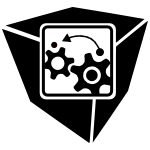 SOFTVIS-2010-LinTOB #comprehension #profiling #towards #using
SOFTVIS-2010-LinTOB #comprehension #profiling #towards #using- Towards anomaly comprehension: using structural compression to navigate profiling call-trees (SL, FT, TCO, LJB), pp. 103–112.
 ECOOP-2010-MonperrusBM #detection #object-oriented
ECOOP-2010-MonperrusBM #detection #object-oriented- Detecting Missing Method Calls in Object-Oriented Software (MM, MB, MM), pp. 2–25.
 PPDP-2010-KameyamaT #axiom #call-by #equation
PPDP-2010-KameyamaT #axiom #call-by #equation- Equational axiomatization of call-by-name delimited control (YK, AT), pp. 77–86.
 SAC-2010-SamiYPHH #api #detection #mining
SAC-2010-SamiYPHH #api #detection #mining- Malware detection based on mining API calls (AS, BY, HR, NP, SH, AH), pp. 1020–1025.
 ICSE-2010-SumnerZWZ #encoding #precise
ICSE-2010-SumnerZWZ #encoding #precise- Precise calling context encoding (WNS, YZ, DW, XZ), pp. 525–534.
 OSDI-2010-SoaresS #flexibility #named #scheduling
OSDI-2010-SoaresS #flexibility #named #scheduling- FlexSC: Flexible System Call Scheduling with Exception-Less System Calls (LS, MS), pp. 33–46.
 RTA-2010-Schmidt-SchaussSM #call-by #simulation #λ-calculus
RTA-2010-Schmidt-SchaussSM #call-by #simulation #λ-calculus- Simulation in the Call-by-Need λ-Calculus with letrec (MSS, DS, EM), pp. 295–310.
 DATE-2009-MadridSNGAVMA #framework #integration
DATE-2009-MadridSNGAVMA #framework #integration- Integration of an advanced emergency call subsystem into a car-gateway platform (NMM, RS, ARN, JSG, AlSA, PSV, CRM, FA), pp. 1100–1105.
 CSEET-2009-Bourque #feedback
CSEET-2009-Bourque #feedback- SWEBOK Refresh and Continuous Update: A Call for Feedback and Participation (PB), pp. 288–289.
 ICSM-2009-LinZZ #aspectj #graph #incremental
ICSM-2009-LinZZ #aspectj #graph #incremental- Incremental call graph reanalysis for AspectJ software (YL, SZ, JZ), pp. 306–315.
 MSR-2009-ShinBOW #fault #predict #question
MSR-2009-ShinBOW #fault #predict #question- Does calling structure information improve the accuracy of fault prediction? (YS, RMB, TJO, EJW), pp. 61–70.
 PEPM-2009-MoretBV #execution #named #profiling
PEPM-2009-MoretBV #execution #named #profiling- CCCP: complete calling context profiling in virtual execution environments (PM, WB, AV), pp. 151–160.
 PEPM-2009-MoretBV09a #embedded #java #named
PEPM-2009-MoretBV09a #embedded #java #named- CProf: customizable calling context cross-profiling for embedded java processors (PM, WB, AV), pp. 161–164.
 SAS-2009-GodoyT #invariant #source code
SAS-2009-GodoyT #invariant #source code- Invariant Checking for Programs with Procedure Calls (GG, AT), pp. 326–342.
 ICFP-2009-MidtgaardJ #abstract interpretation #analysis #control flow
ICFP-2009-MidtgaardJ #abstract interpretation #analysis #control flow- Control-flow analysis of function calls and returns by abstract interpretation (JM, TPJ), pp. 287–298.
 CHI-2009-RosnerB #learning
CHI-2009-RosnerB #learning- Learning from IKEA hacking: I’m not one to decoupage a tabletop and call it a day (DR, JB), pp. 419–422.
 CHI-2009-SuhmP #experience
CHI-2009-SuhmP #experience- Call browser: a system to improve the caller experience by analyzing live calls end-to-end (BS, PP), pp. 1313–1322.
 HIMI-DIE-2009-HorvathLK #analysis #approach #data mining #mining #usability
HIMI-DIE-2009-HorvathLK #analysis #approach #data mining #mining #usability- Usability Analyses of CRM Systems in Call Centers: The Data Mining Approach (ÁH, LL, AK), pp. 40–48.
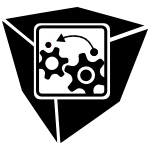 VISSOFT-2009-MoretBAV #visualisation
VISSOFT-2009-MoretBAV #visualisation- Visualizing Calling Context profiles with Ring Charts (PM, WB, DA, AV), pp. 33–36.
 VISSOFT-2009-TeleaHER #c #c++ #case study #comparative #dependence #scalability #visualisation
VISSOFT-2009-TeleaHER #c #c++ #case study #comparative #dependence #scalability #visualisation- Extraction and visualization of call dependencies for large C/C++ code bases: A comparative study (ACT, HH, OE, DR), pp. 81–88.
 CIKM-2009-ParkG #automation #metric #realtime #towards #using
CIKM-2009-ParkG #automation #metric #realtime #towards #using- Towards real-time measurement of customer satisfaction using automatically generated call transcripts (YP, SCG), pp. 1387–1396.
 OOPSLA-2009-MytkowiczCD #profiling
OOPSLA-2009-MytkowiczCD #profiling- Inferred call path profiling (TM, DC, AD), pp. 175–190.
 POPL-2009-JonssonN #call-by #higher-order #supercompilation
POPL-2009-JonssonN #call-by #higher-order #supercompilation- Positive supercompilation for a higher order call-by-value language (PAJ, JN), pp. 277–288.
 RE-2009-CarvalloF #component #on the #process #requirements
RE-2009-CarvalloF #component #on the #process #requirements- On the Use of Requirements for Driving Call-for-Tender Processes for Procuring Coarse-grained OTS Components (JPC, XF), pp. 287–292.
 SAC-2009-YiMCKJ #named #network
SAC-2009-YiMCKJ #named #network- Arbiter-Recall: a new function update scheme by arbitration between a remote call and a dynamic update for wireless sensor networks (SY, HM, YC, YK, IJ), pp. 339–340.
 ESEC-FSE-2009-KahlonSKZ #concurrent #detection #source code
ESEC-FSE-2009-KahlonSKZ #concurrent #detection #source code- Static data race detection for concurrent programs with asynchronous calls (VK, NS, EK, YZ), pp. 13–22.
 CGO-2009-SerranoZ #approximate
CGO-2009-SerranoZ #approximate- Building Approximate Calling Context from Partial Call Traces (MJS, XZ), pp. 221–230.
 LCTES-2009-YangCR #ram #stack
LCTES-2009-YangCR #ram #stack- Eliminating the call stack to save RAM (XY, NC, JR), pp. 60–69.
 TLCA-2009-HerbelinZ #call-by #deduction #λ-calculus
TLCA-2009-HerbelinZ #call-by #deduction #λ-calculus- An Operational Account of Call-by-Value Minimal and Classical λ-Calculus in “Natural Deduction” Form (HH, SZ), pp. 142–156.
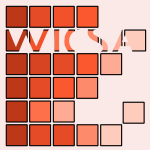 WICSA-2008-Klein #architecture #evolution
WICSA-2008-Klein #architecture #evolution- Interplay of Architecture, Business Goals, and Current Technology in the Evolution of Call Center Systems (JK), pp. 93–94.
 ITiCSE-2008-ApplinH #library #multi #research
ITiCSE-2008-ApplinH #library #multi #research- Computing research methods multi-perspective digital library: a call for participation (AGA, HJH), p. 337.
 FoSSaCS-2008-SelingerV #call-by #λ-calculus
FoSSaCS-2008-SelingerV #call-by #λ-calculus- A Linear-non-Linear Model for a Computational Call-by-Value λ Calculus (Extended Abstract) (PS, BV), pp. 81–96.
 FLOPS-2008-Lopez-FraguasRS
FLOPS-2008-Lopez-FraguasRS- Rewriting and Call-Time Choice: The HO Case (FJLF, JRH, JSH), pp. 147–162.
 ICALP-B-2008-Lebresne #call-by #exception #system f
ICALP-B-2008-Lebresne #call-by #exception #system f- A System F with Call-by-Name Exceptions (SL), pp. 323–335.
 ICEIS-HCI-2008-MileyRM #learning
ICEIS-HCI-2008-MileyRM #learning- Traditional Learning Vs. e-LEARNING — Some Results from Training Call Centre Personnel (MM, JAR, CM), pp. 299–307.
 CIKM-2008-ByrdNTPCGV #automation
CIKM-2008-ByrdNTPCGV #automation- Semi-automated logging of contact center telephone calls (RJB, MSN, WT, YP, KSFC, SCG, KV), pp. 133–142.
 CIKM-2008-FaruquieNCS #detection #information management
CIKM-2008-FaruquieNCS #detection #information management- Exploiting context to detect sensitive information in call center conversations (TAF, SN, AC, LVS), pp. 1513–1514.
 KDD-2008-SeshadriMSBFL #graph #mobile
KDD-2008-SeshadriMSBFL #graph #mobile- Mobile call graphs: beyond power-law and lognormal distributions (MS, SM, AS, JB, CF, JL), pp. 596–604.
 SEKE-2008-BadriBS #approach #co-evolution #object-oriented #predict
SEKE-2008-BadriBS #approach #co-evolution #object-oriented #predict- Predicting Change Propagation in Object-oriented Systems: a Control-call Path Based Approach and Associated Tool (LB, MB, DSY), pp. 103–110.
 SEKE-2008-KraftW #eclipse #graph
SEKE-2008-KraftW #eclipse #graph- Evaluating the Accuracy of Call Graphs Extracted with the Eclipse CDT (NAK, KSW), pp. 85–90.
 SEKE-2008-ParveenATMF #analysis #detection #probability #towards
SEKE-2008-ParveenATMF #analysis #detection #probability #towards- Towards the Detection of Emulated Environments via Analysis of the Stochastic Nature of System Calls (TP, WHA, SRT, GAM, RF), pp. 802–807.
 PPDP-2008-Hanus #analysis #functional #logic programming #source code
PPDP-2008-Hanus #analysis #functional #logic programming #source code- Call pattern analysis for functional logic programs (MH), pp. 67–78.
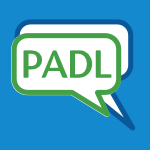 PADL-2008-GuzmanCHSR #continuation #implementation
PADL-2008-GuzmanCHSR #continuation #implementation- An Improved Continuation Call-Based Implementation of Tabling (PCdG, MC, MVH, CS, RR), pp. 197–213.
 POPL-2008-HerbelinG #approach #call-by #continuation
POPL-2008-HerbelinG #approach #call-by #continuation- An approach to call-by-name delimited continuations (HH, SG), pp. 383–394.
 SAC-2008-OnoueOY #virtual machine
SAC-2008-OnoueOY #virtual machine- Control of system calls from outside of virtual machines (KO, YO, AY), pp. 2116–1221.
 CC-2008-KhedkerK #analysis #data flow #interprocedural #performance #precise #string
CC-2008-KhedkerK #analysis #data flow #interprocedural #performance #precise #string- Efficiency, Precision, Simplicity, and Generality in Interprocedural Data Flow Analysis: Resurrecting the Classical Call Strings Method (UPK, BK), pp. 213–228.
 ICST-2008-KimC #object-oriented #sequence #source code #testing
ICST-2008-KimC #object-oriented #sequence #source code #testing- A Fitness Function to Find Feasible Sequences of Method Calls for Evolutionary Testing of Object-Oriented Programs (MK, YC), pp. 537–540.
 ICST-2008-MouyMWG #generative #testing
ICST-2008-MouyMWG #generative #testing- Generation of All-Paths Unit Test with Function Calls (PM, BM, NW, PLG), pp. 32–41.
 RTA-2008-Schmidt-SchaussM #call-by #finite #nondeterminism #simulation #λ-calculus
RTA-2008-Schmidt-SchaussM #call-by #finite #nondeterminism #simulation #λ-calculus- A Finite Simulation Method in a Non-deterministic Call-by-Need λ-Calculus with Letrec, Constructors, and Case (MSS, EM), pp. 321–335.
 ASE-2007-KagdiCM #approach #mining
ASE-2007-KagdiCM #approach #mining- An approach to mining call-usage patternswith syntactic context (HHK, MLC, JIM), pp. 457–460.
 ASE-2007-SmithGKS #reduction #testing
ASE-2007-SmithGKS #reduction #testing- Test suite reduction and prioritization with call trees (AMS, JG, GMK, MLS), pp. 539–540.
 DATE-2007-BrandenburgSHEE #algorithm #approach #design #novel #prototype
DATE-2007-BrandenburgSHEE #algorithm #approach #design #novel #prototype- From algorithm to first 3.5G call in record time: a novel system design approach based on virtual prototyping and its consequences for interdisciplinary system design teams (MB, AS, SH, JE, TE), pp. 828–830.
 VLDB-2007-NambiarGM #elicitation #named
VLDB-2007-NambiarGM #elicitation #named- CallAssist: Helping Call Center Agents in Preference Elicitation (UN, HG, MKM), pp. 1338–1341.
 ITiCSE-2007-BrownM #source code #student #visualisation
ITiCSE-2007-BrownM #source code #student #visualisation- Visualizing berkeley socket calls in students’ programs (CB, CM), pp. 101–105.
 MSR-2007-KagdiCM #mining #source code
MSR-2007-KagdiCM #mining #source code- Comparing Approaches to Mining Source Code for Call-Usage Patterns (HHK, MLC, JIM), p. 20.
 PASTE-2007-Lhotak #graph
PASTE-2007-Lhotak #graph- Comparing call graphs (OL), pp. 37–42.
 ICFP-2007-BrasselHFHV #call-by #evaluation #lazy evaluation
ICFP-2007-BrasselHFHV #call-by #evaluation #lazy evaluation- Lazy call-by-value evaluation (BB, MH, SF, FH, GV), pp. 265–276.
 ICFP-2007-Jones #haskell #source code
ICFP-2007-Jones #haskell #source code- Call-pattern specialisation for haskell programs (SLPJ), pp. 327–337.
 ICFP-2007-Sereni #analysis #functional #graph #higher-order #source code #termination
ICFP-2007-Sereni #analysis #functional #graph #higher-order #source code #termination- Termination analysis and call graph construction for higher-order functional programs (DS), pp. 71–84.
 VISSOFT-2007-BohnetD #2d #graph #source code #visualisation
VISSOFT-2007-BohnetD #2d #graph #source code #visualisation- Facilitating Exploration of Unfamiliar Source Code by Providing 21/2D Visualizations of Dynamic Call Graphs (JB, JD), pp. 63–66.
 VISSOFT-2007-BohnetD07a #compilation #comprehension #graph
VISSOFT-2007-BohnetD07a #compilation #comprehension #graph- CGA Call Graph Analyzer — Locating and Understanding Functionality within the Gnu Compiler Collection’s Million Lines of Code (JB, JD), pp. 161–162.
 CIKM-2007-Park #automation #segmentation
CIKM-2007-Park #automation #segmentation- Automatic call section segmentation for contact-center calls (YP), pp. 117–126.
 SEKE-2007-KanaskarSR #analysis #approach #detection #using
SEKE-2007-KanaskarSR #analysis #approach #detection #using- A Dynamical System Approach to Intrusion Detection Using System Call Analysis (NK, RS, SR), pp. 710–717.
 OOPSLA-2007-BondM #probability
OOPSLA-2007-BondM #probability- Probabilistic calling context (MDB, KSM), pp. 97–112.
 OOPSLA-2007-ShanerLN #composition #higher-order #source code #verification
OOPSLA-2007-ShanerLN #composition #higher-order #source code #verification- Modular verification of higher-order methods with mandatory calls specified by model programs (SMS, GTL, DAN), pp. 351–368.
 PPDP-2007-Lopez-FraguasRS #semantics
PPDP-2007-Lopez-FraguasRS #semantics- A simple rewrite notion for call-time choice semantics (FJLF, JRH, JSH), pp. 197–208.
 SAC-2007-TengC #community #mining #mobile
SAC-2007-TengC #community #mining #mobile- Mining communities of acquainted mobile users on call detail records (WGT, MCC), pp. 957–958.
 CC-2007-LeeRBM #constraints #control flow #graph #using
CC-2007-LeeRBM #constraints #control flow #graph #using- Correcting the Dynamic Call Graph Using Control-Flow Constraints (BL, KR, MDB, KSM), pp. 80–95.
 DAC-2006-GoffioulVDDC #consistency #design #object-oriented #using
DAC-2006-GoffioulVDDC #consistency #design #object-oriented #using- Ensuring consistency during front-end design using an object-oriented interfacing tool called NETLISP (MG, GV, JVD, BD, BC), pp. 889–892.
 ESOP-2006-CooperK #call-by #data flow
ESOP-2006-CooperK #call-by #data flow- Embedding Dynamic Dataflow in a Call-by-Value Language (GHC, SK), pp. 294–308.
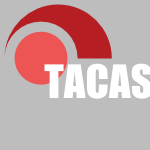 TACAS-2006-ChakiCKRT #c #concurrent #message passing #recursion #source code #verification
TACAS-2006-ChakiCKRT #c #concurrent #message passing #recursion #source code #verification- Verifying Concurrent Message-Passing C Programs with Recursive Calls (SC, EMC, NK, TWR, TT), pp. 334–349.
 MSR-2006-ZimmermannBLL #mining
MSR-2006-ZimmermannBLL #mining- Mining additions of method calls in ArgoUML (TZ, SB, CL, VBL), pp. 169–170.
 SCAM-2006-SawinR #algorithm #graph #runtime
SCAM-2006-SawinR #algorithm #graph #runtime- Estimating the Run-Time Progress of a Call Graph Construction Algorithm (JS, AR), pp. 53–62.
 SCAM-2006-ZhangR #graph #java #library
SCAM-2006-ZhangR #graph #java #library- Constructing Accurate Application Call Graphs For Java To Model Library Callbacks (WZ, BGR), pp. 63–74.
 PLDI-2006-ZhuangSCC #adaptation #performance #profiling
PLDI-2006-ZhuangSCC #adaptation #performance #profiling- Accurate, efficient, and adaptive calling context profiling (XZ, MJS, HWC, JDC), pp. 263–271.
 SOFTVIS-2006-BohnetD #feature model #graph #visual notation
SOFTVIS-2006-BohnetD #feature model #graph #visual notation- Visual exploration of function call graphs for feature location in complex software systems (JB, JD), pp. 95–104.
 CIKM-2006-NanavatiGDCDMJ #graph #on the
CIKM-2006-NanavatiGDCDMJ #graph #on the- On the structural properties of massive telecom call graphs: findings and implications (AAN, SG, GD, DC, KD, SM, AJ), pp. 435–444.
 KDD-2006-FormanKS #mining
KDD-2006-FormanKS #mining- Pragmatic text mining: minimizing human effort to quantify many issues in call logs (GF, EK, JS), pp. 852–861.
 SEKE-2006-ZhaoGQC #abstraction #constraints #prolog #semantics
SEKE-2006-ZhaoGQC #abstraction #constraints #prolog #semantics- A Constraint-based Correct Call Pattern Semantics for Prolog as an Abstraction of Decorated Tree Semantics (LZ, TG, JQ, GC), pp. 359–362.
 SIGIR-2006-MamouCH #documentation #retrieval
SIGIR-2006-MamouCH #documentation #retrieval- Spoken document retrieval from call-center conversations (JM, DC, RH), pp. 51–58.
 POPL-2006-OlinskyLR #composition #implementation #specification #staged
POPL-2006-OlinskyLR #composition #implementation #specification #staged- Staged allocation: a compositional technique for specifying and implementing procedure calling conventions (RO, CL, NR), pp. 409–421.
 RE-2006-AkkermansG #question #requirements #what
RE-2006-AkkermansG #question #requirements #what- What is This Science Called Requirements Engineering? (HA, JG), pp. 266–271.
 CAV-2006-ManoliosV #analysis #graph #termination
CAV-2006-ManoliosV #analysis #graph #termination- Termination Analysis with Calling Context Graphs (PM, DV), pp. 401–414.
 ICLP-2006-BaralDT #composition #metaprogramming #set
ICLP-2006-BaralDT #composition #metaprogramming #set- Macros, Macro Calls and Use of Ensembles in Modular Answer Set Programming (CB, JD, HT), pp. 376–390.
 WRLA-2004-JohnsenOA05 #concurrent #runtime
WRLA-2004-JohnsenOA05 #concurrent #runtime- A Run-Time Environment for Concurrent Objects With Asynchronous Method Calls (EBJ, OO, EWA), pp. 375–392.
 ICSM-2005-Demeyer #morphism #performance #polymorphism #question #what
ICSM-2005-Demeyer #morphism #performance #polymorphism #question #what- Refactor Conditionals into Polymorphism: What’s the Performance Cost of Introducing Virtual Calls? (SD), pp. 627–630.
 ICSM-2005-McMasterM #reduction #stack #testing
ICSM-2005-McMasterM #reduction #stack #testing- Call Stack Coverage for Test Suite Reduction (SM, AMM), pp. 539–548.
 PLDI-2005-FurrF #type safety
PLDI-2005-FurrF #type safety- Checking type safety of foreign function calls (MF, JSF), pp. 62–72.
 CHI-2005-SchneiderK
CHI-2005-SchneiderK- Calling while driving: effects of providing remote traffic context (MS, SBK), pp. 561–569.
 ICEIS-v4-2005-DaniGP05a #constraints #design
ICEIS-v4-2005-DaniGP05a #constraints #design- Design of Continuous Call Market with Assignment Constraints (ARD, VPG, AKP), pp. 182–187.
 CIKM-2005-MishneCHRS #analysis #automation
CIKM-2005-MishneCHRS #analysis #automation- Automatic analysis of call-center conversations (GM, DC, RH, AR, AS), pp. 453–459.
 SAC-2005-GoettlBJ #algorithm #email #search-based
SAC-2005-GoettlBJ #algorithm #email #search-based- Call me e-mail: arranging the keyboard with a permutation-coded genetic algorithm (JSG, AWB, BAJ), pp. 947–951.
 CGO-2005-ArnoldG #graph #virtual machine
CGO-2005-ArnoldG #graph #virtual machine- Collecting and Exploiting High-Accuracy Call Graph Profiles in Virtual Machines (MA, DG), pp. 51–62.
 RTA-2005-Rocheteau #call-by #λ-calculus #μ-calculus
RTA-2005-Rocheteau #call-by #λ-calculus #μ-calculus- λμ-Calculus and Duality: Call-by-Name and Call-by-Value (JR), pp. 204–218.
 RTA-2005-Wadler #call-by
RTA-2005-Wadler #call-by- Call-by-Value Is Dual to Call-by-Name — Reloaded (PW), pp. 185–203.
 TLCA-2005-CoppolaLR #call-by #logic #λ-calculus
TLCA-2005-CoppolaLR #call-by #logic #λ-calculus- Elementary Affine Logic and the Call-by-Value λ Calculus (PC, UDL, SRDR), pp. 131–145.
 TLCA-2005-Sinot #call-by #interactive
TLCA-2005-Sinot #call-by #interactive- Call-by-Name and Call-by-Value as Token-Passing Interaction Nets (FRS), pp. 386–400.
 ESOP-2004-HirschowitzLW #call-by #mixin #reduction #semantics
ESOP-2004-HirschowitzLW #call-by #mixin #reduction #semantics- Call-by-Value Mixin Modules: Reduction Semantics, Side Effects, Types (TH, XL, JBW), pp. 64–78.
 ESOP-2004-Thielecke #call-by #continuation #morphism #polymorphism
ESOP-2004-Thielecke #call-by #continuation #morphism #polymorphism- Answer Type Polymorphism in Call-by-Name Continuation Passing (HT), pp. 279–293.
 TACAS-2004-AlurEM #logic
TACAS-2004-AlurEM #logic- A Temporal Logic of Nested Calls and Returns (RA, KE, PM), pp. 467–481.
 ICSM-2004-IshioKI #aspect-oriented #debugging #graph #slicing
ICSM-2004-IshioKI #aspect-oriented #debugging #graph #slicing- Debugging Support for Aspect-Oriented Program Based on Program Slicing and Call Graph (TI, SK, KI), pp. 178–187.
 SCAM-2004-LakhotiaK #detection #obfuscation #stack
SCAM-2004-LakhotiaK #detection #obfuscation #stack- Abstracting Stack to Detect Obfuscated Calls in Binaries (AL, EUK), pp. 17–26.
 FLOPS-2004-Hasegawa #call-by #continuation #linear #semantics
FLOPS-2004-Hasegawa #call-by #continuation #linear #semantics- Semantics of Linear Continuation-Passing in Call-by-Name (MH), pp. 229–243.
 ICFP-2004-ShiversF #multi
ICFP-2004-ShiversF #multi- Multi-return function call (OS, DF), pp. 79–89.
 ICEIS-v3-2004-PoulsonHNG #case study
ICEIS-v3-2004-PoulsonHNG #case study- Reversing the Trend of Commoditization: A Case Study of the Strategic Planning and Management of a Call Center (BP, JCH, SN, RDG), pp. 396–402.
 SAC-2004-KarabudakHB #algorithm #search-based #using
SAC-2004-KarabudakHB #algorithm #search-based #using- A call admission control scheme using genetic algorithms (DK, CCH, BB), pp. 1151–1158.
 FASE-2003-TenzerS #diagrams #modelling #recursion #uml
FASE-2003-TenzerS #diagrams #modelling #recursion #uml- Modelling Recursive Calls with UML State Diagrams (JT, PS), pp. 135–149.
 FoSSaCS-2003-DunfieldP #call-by
FoSSaCS-2003-DunfieldP #call-by- Type Assignment for Intersections and Unions in Call-by-Value Languages (JD, FP), pp. 250–266.
 CSMR-2003-KienleS #benchmark #community #metric #towards #web
CSMR-2003-KienleS #benchmark #community #metric #towards #web- Towards a Benchmark for Web Site Extractors: A Call for Community Participatio (HMK, SES), p. 82–?.
 IWPC-2003-HopfnerSG #graph #visualisation #xml
IWPC-2003-HopfnerSG #graph #visualisation #xml- Comprehending and Visualizing Software Based on XML — Representations and Call Graphs (MH, DS, JWvG), pp. 290–291.
 SAS-2003-Minamide
SAS-2003-Minamide- Selective Tail Call Elimination (YM), pp. 153–170.
 ICFP-2003-Wadler #call-by
ICFP-2003-Wadler #call-by- Call-by-value is dual to call-by-name (PW), pp. 189–201.
 VISSOFT-2003-MaleticM #benchmark #metric #named #visualisation
VISSOFT-2003-MaleticM #benchmark #metric #named #visualisation- CFB: A Call for Benchmarks – for Software Visualization (JIM, AM), pp. 113–116.
 PPDP-2003-HirschowitzLW #call-by #compilation #functional #recursion
PPDP-2003-HirschowitzLW #call-by #compilation #functional #recursion- Compilation of extended recursion in call-by-value functional languages (TH, XL, JBW), pp. 160–171.
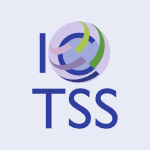 TestCom-2003-RanganathanDM #protocol #testing #using #xml
TestCom-2003-RanganathanDM #protocol #testing #using #xml- Testing SIP Call Flows Using XML Protocol Templates (MR, OD, DM), pp. 33–48.
 ASE-2002-Hall #concurrent #java #multi #named #profiling #thread
ASE-2002-Hall #concurrent #java #multi #named #profiling #thread- CPPROFJ: Aspect-Capable Call Path Profiling of Multi-Threaded Java Applications (RJH), pp. 107–116.
 ESOP-2002-HirschowitzL #call-by #mixin
ESOP-2002-HirschowitzL #call-by #mixin- Mixin Modules in a Call-by-Value Setting (TH, XL), pp. 6–20.
 SCAM-J-2001-SouterP02 #automation #identification
SCAM-J-2001-SouterP02 #automation #identification- Characterization and automatic identification of type infeasible call chains (ALS, LLP), pp. 721–732.
 CSMR-2002-MolnarBS #aspectj #java #xml
CSMR-2002-MolnarBS #aspectj #java #xml- Function Call Trap of Java Codes with the Help of AspectJ and XML (BM, IB, BS), pp. 207–210.
 SCAM-2002-MilanovaRR #graph #pointer #precise
SCAM-2002-MilanovaRR #graph #pointer #precise- Precise Call Graph Construction in the Presence of Function Pointers (AM, AR, BGR), pp. 155–162.
 ICALP-2002-AdamyAAE
ICALP-2002-AdamyAAE- Call Control in Rings (UA, CA, RSA, TE), pp. 788–799.
 ICFP-2002-GasbichlerS #implementation
ICFP-2002-GasbichlerS #implementation- Final shift for call/cc: : direct implementation of shift and reset (MG, MS), pp. 271–282.
 ICGT-2002-FernandezM #call-by #graph grammar
ICGT-2002-FernandezM #call-by #graph grammar- Call-by-Value λ-Graph Rewriting Without Rewriting (MF, IM), pp. 75–89.
 CHI-2002-SuhmBMFGGP #case study #comparative #natural language #speech
CHI-2002-SuhmBMFGGP #case study #comparative #natural language #speech- A comparative study of speech in the call center: natural language call routing vs. touch-tone menus (BS, JB, DM, BF, DG, KG, PP), pp. 283–290.
 ICPR-v2-2002-IwataKY
ICPR-v2-2002-IwataKY- The Proposal of a New Robot Vision System Called the Horizon View Camera (AI, KK, KY), pp. 709–712.
 PPDP-2002-BessonLJ #stack
PPDP-2002-BessonLJ #stack- Secure calling contexts for stack inspection (FB, TdGdL, TPJ), pp. 76–87.
 CC-2002-AgrawalLS #graph
CC-2002-AgrawalLS #graph- Evaluating a Demand Driven Technique for Call Graph Construction (GA, JL, QS), pp. 29–45.
 CSL-2002-Kakutani #call-by #recursion
CSL-2002-Kakutani #call-by #recursion- Duality between Call-by-Name Recursion and Call-by-Value Iteration (YK), pp. 506–521.
 CSL-2002-Levy #call-by #semantics
CSL-2002-Levy #call-by #semantics- Possible World Semantics for General Storage in Call-By-Value (PBL), pp. 232–246.
 TestCom-2002-RosslerS #flexibility #generative #performance #testing
TestCom-2002-RosslerS #flexibility #generative #performance #testing- A Flexible Traffic Generator for Testing PABX and Call Center Performance (GR, TS), p. 139–?.
 ITiCSE-2001-Fowler #prolog #using
ITiCSE-2001-Fowler #prolog #using- Web-based CALL using prolog (AF), p. 181.
 FoSSaCS-2001-DurandM #call-by #composition #on the
FoSSaCS-2001-DurandM #call-by #composition #on the- On the Modularity of Deciding Call-by-Need (ID, AM), pp. 199–213.
 FoSSaCS-2001-HasegawaK #axiom #call-by #recursion
FoSSaCS-2001-HasegawaK #axiom #call-by #recursion- Axioms for Recursion in Call-by-Value (MH, YK), pp. 246–260.
 ICSM-2001-SouterP #graph #incremental #maintenance #object-oriented
ICSM-2001-SouterP #graph #incremental #maintenance #object-oriented- Incremental Call Graph Reanalysis for Object-Oriented Software Maintenance (ALS, LLP), pp. 682–691.
 SCAM-2001-SouterP
SCAM-2001-SouterP- Type Infeasible Call Chains (ALS, LLP), pp. 196–205.
 ICFP-2001-GustavssonS #call-by
ICFP-2001-GustavssonS #call-by- Possibilities and Limitations of Call-by-Need Space Improvement (JG, DS), pp. 265–276.
 CHI-2001-BlySN #mobile
CHI-2001-BlySN #mobile- Quiet calls: talking silently on mobile phones (SAB, TS, LN), pp. 174–187.
 SVIS-2001-Evstiougov-Babaev #control flow #developer #embedded #graph #visualisation
SVIS-2001-Evstiougov-Babaev #control flow #developer #embedded #graph #visualisation- Call Graph and Control Flow Graph Visualization for Developers of Embedded Applications (AAEB), pp. 337–346.
 HPCA-2001-AnnavaramPD #database #graph
HPCA-2001-AnnavaramPD #database #graph- Call Graph Prefetching for Database Applications (MA, JMP, ESD), pp. 281–290.
 IWPC-2000-Goldman #interactive #monitoring #named
IWPC-2000-Goldman #interactive #monitoring #named- Smiley — An Interactive Tool for Monitoring Inter-Module Function Calls (NMG), pp. 109–118.
 IWPC-2000-RaysideRHK #algorithm #automation #clustering #graph #object-oriented #source code
IWPC-2000-RaysideRHK #algorithm #automation #clustering #graph #object-oriented #source code- The Effect of Call Graph Construction Algorithms for Object-Oriented Programs on Automatic Clustering (DR, SR, EH, KK), pp. 191–200.
 PLDI-2000-HeydonLY #dependence #precise #using
PLDI-2000-HeydonLY #dependence #precise #using- Caching function calls using precise dependencies (AH, RL, YY), pp. 311–320.
 ICALP-2000-AielloBOR #performance #proving #verification
ICALP-2000-AielloBOR #performance #proving #verification- Fast Verification of Any Remote Procedure Call: Short Witness-Indistinguishable One-Round Proofs for NP (WA, SNB, RO, SR), pp. 463–474.
 CSCW-2000-BowersM #interactive
CSCW-2000-BowersM #interactive- Machinery in the new factories: interaction and technology in a bank’s telephone call centre (JB, DBM), pp. 49–58.
 KDD-2000-TanBHG #data mining #mining
KDD-2000-TanBHG #data mining #mining- Textual data mining of service center call records (PNT, HB, SAH, RPG), pp. 417–423.
 OOPSLA-2000-SundaresanHRVLGG #java
OOPSLA-2000-SundaresanHRVLGG #java- Practical virtual method call resolution for Java (VS, LJH, CR, RVR, PL, EG, CG), pp. 264–280.
 OOPSLA-2000-TipP #algorithm #graph #scalability
OOPSLA-2000-TipP #algorithm #graph #scalability- Scalable propagation-based call graph construction algorithms (FT, JP), pp. 281–293.
 OOPSLA-2000-ZaksFA #java
OOPSLA-2000-ZaksFA #java- Sealed calls in Java packages (AZ, VF, NA), pp. 83–92.
 CC-2000-Agrawal #graph
CC-2000-Agrawal #graph- Demand-Driven Construction of Call Graphs (GA), pp. 125–140.
 VLDB-1999-NinkHR #database #generative #interface #programming
VLDB-1999-NinkHR #database #generative #interface #programming- Generating Call-Level Interfaces for Advanced Database Application Programming (UN, TH, NR), pp. 575–586.
 CSMR-1999-AntoniolCT #graph #pointer
CSMR-1999-AntoniolCT #graph #pointer- Impact of Function Pointers on the Call Graph (GA, FC, PT), pp. 51–61.
 ICSM-1999-Agrawal #analysis #data flow #graph
ICSM-1999-Agrawal #analysis #data flow #graph- Simultaneous Demand-Driven Data-Flow and Call Graph Analysis (GA), pp. 453–462.
 ICFP-1999-FinneLMJ
ICFP-1999-FinneLMJ- Calling Hell From Heaven and Heaven From Hell (SF, DL, EM, SLPJ), pp. 114–125.
 HCI-CCAD-1999-GrundelS #communication #process #user interface
HCI-CCAD-1999-GrundelS #communication #process #user interface- A direct manipulation user interface for the control of communication processes — making call handling manageable (CG, MSH), pp. 8–13.
 HCI-CCAD-1999-Hampe #challenge
HCI-CCAD-1999-Hampe #challenge- Call center: technical and organizational challenges (JFH), pp. 1316–1320.
 HCI-CCAD-1999-Menzel #design
HCI-CCAD-1999-Menzel #design- New design solution for call center work places from the point of view of furniture manufacturer (DM), pp. 1327–1331.
 HCI-CCAD-1999-Rentzsch #design
HCI-CCAD-1999-Rentzsch #design- Human-computer-interactions in call centres — ergonomic demands and design solutions (MR), pp. 1311–1315.
 HCI-CCAD-1999-RotheMD
HCI-CCAD-1999-RotheMD- Mental load of call centre agents (HJR, AMM, MD), pp. 1321–1326.
 HCI-CCAD-1999-Tielsch #health #interface #network #safety
HCI-CCAD-1999-Tielsch #health #interface #network #safety- Call center — interface between companies’ practice and the competence network of safety and health at work in North-Rhine-Westfalia (RT), pp. 1332–1336.
 HCI-EI-1999-HansenS #question #what
HCI-EI-1999-HansenS #question #what- 200, 000, 000, 000 Call Records — Now What Do We Do? (RSH, RKS), pp. 1158–1161.
 HCI-EI-1999-RistimakiLH #implementation
HCI-EI-1999-RistimakiLH #implementation- Implementation of Information Technology in Call Centers (TR, TL, PH), pp. 6–10.
 ICEIS-1999-ToffolonD #framework #process #re-engineering
ICEIS-1999-ToffolonD #framework #process #re-engineering- The Decision Process in Software Engineering-A Framework Based on the Call Options Theory (CT, SD), p. 778.
 TOOLS-EUROPE-1999-Henderson-SellersB #question #what
TOOLS-EUROPE-1999-Henderson-SellersB #question #what- What is This Thing Called Aggregation? (BHS, FB), pp. 236–250.
 POPL-1999-MoranS #call-by #lazy evaluation
POPL-1999-MoranS #call-by #lazy evaluation- Improvement in a Lazy Context: An Operational Theory for Call-by-Need (AM, DS), pp. 43–56.
 ICSE-1999-NishimatsuJKI #performance #slicing
ICSE-1999-NishimatsuJKI #performance #slicing- Call-Mark Slicing: An Efficient and Economical Way of Reducing Slice (AN, MJ, SK, KI), pp. 422–431.
 CC-1999-Martin #analysis #comparison #functional #interprocedural #string
CC-1999-Martin #analysis #comparison #functional #interprocedural #string- Experimental Comparison of call string and functional Approaches to Interprocedural Analysis (FM), pp. 63–75.
 PPoPP-1999-TauraTY #named #standard #thread
PPoPP-1999-TauraTY #named #standard #thread- StackThreads/MP: Integrating Futures into Calling Standards (KT, KT, AY), pp. 60–71.
 CSL-1999-KinoshitaP #call-by #programming language
CSL-1999-KinoshitaP #call-by #programming language- Data-Refinement for Call-By-Value Programming Languages (YK, JP), pp. 562–576.
 TLCA-1999-Fujita #call-by #morphism #polymorphism #λ-calculus #μ-calculus
TLCA-1999-Fujita #call-by #morphism #polymorphism #λ-calculus #μ-calculus- Explicitly Typed λμ-Calculus for Polymorphism an Call-by-Value (KeF), pp. 162–176.
 TLCA-1999-Levy #call-by #named #paradigm
TLCA-1999-Levy #call-by #named #paradigm- Call-by-Push-Value: A Subsuming Paradigm (PBL), pp. 228–242.
 ICFP-1998-KutznerS #call-by #nondeterminism #λ-calculus
ICFP-1998-KutznerS #call-by #nondeterminism #λ-calculus- A Non-Deterministic Call-by-Need λ Calculus (AK, MSS), pp. 324–335.
 ACIR-1998-Lazarinis #information management #information retrieval #performance
ACIR-1998-Lazarinis #information management #information retrieval #performance- Combining Information Retrieval with Information Extraction for Efficient Retrieval of Calls for Papers (FL).
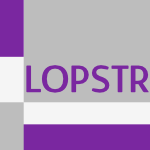 LOPSTR-1998-BossiR #logic programming #source code #specification
LOPSTR-1998-BossiR #logic programming #source code #specification- Specialising Logic Programs with Respect to Call?Post Specifications (AB, SR), pp. 159–178.
 POPL-1998-AriolaS #calculus #call-by #correctness #imperative #monad
POPL-1998-AriolaS #calculus #call-by #correctness #imperative #monad- Correctness of Monadic State: An Imperative Call-by-Need Calculus (ZMA, AS), pp. 62–74.
 PEPM-1997-AsaiMY #call-by #partial evaluation #λ-calculus
PEPM-1997-AsaiMY #call-by #partial evaluation #λ-calculus- Partial Evaluation of Call-by-Value λ-Calculus with Side-Effects (KA, HM, AY), pp. 12–21.
 PLDI-1997-LuehG
PLDI-1997-LuehG- Call-Cost Directed Register Allocation (GYL, TRG), pp. 296–307.
 ICALP-1997-HondaY #analysis #call-by #game studies
ICALP-1997-HondaY #analysis #call-by #game studies- Game Theoretic Analysis of Call-by-Value Computation (KH, NY), pp. 225–236.
 CHI-1997-KieslerKLSM #internet #usability
CHI-1997-KieslerKLSM #internet #usability- Usability, Help Desk Calls, and Residential Internet Usage (SBK, REK, VL, WLS, TM), pp. 536–537.
 HCI-SEC-1997-BuieV #human-computer #re-engineering
HCI-SEC-1997-BuieV #human-computer #re-engineering- Integrating HCI Engineering and Software Engineering: A Call to a Larger Vision (EAB, AV), pp. 525–530.
 KDD-1997-Xia #effectiveness #framework #information management
KDD-1997-Xia #effectiveness #framework #information management- Knowledge Discovery in Integrated Call Centers: A Framework for Effective Customer-Driven Marketing (PX), pp. 279–282.
 OOPSLA-1997-GroveDDC #graph #object-oriented
OOPSLA-1997-GroveDDC #graph #object-oriented- Call Graph Construction in Object-Oriented Languages (DG, GD, JD, CC), pp. 108–124.
 POPL-1997-Middeldorp #call-by
POPL-1997-Middeldorp #call-by- Call by Need Computations to Root-Stable Form (AM), pp. 94–105.
 CADE-1997-DurandM #call-by #decidability #term rewriting
CADE-1997-DurandM #call-by #decidability #term rewriting- Decidable Call by Need Computations in term Rewriting (Extended Abstract) (ID, AM), pp. 4–18.
 CSL-1997-AbramskyM #call-by #game studies
CSL-1997-AbramskyM #call-by #game studies- Call-by-Value Games (SA, GM), pp. 1–17.
 LICS-1997-RieckeS #call-by #relational
LICS-1997-RieckeS #call-by #relational- A Relational Account of Call-by-Value Sequentiality (JGR, AS), pp. 258–267.
 PLDI-1996-BaileyD #generative #sequence #source code
PLDI-1996-BaileyD #generative #sequence #source code- Target-Sensitive Construction of Diagnostic Programs for Procedure Calling Sequence Generators (MWB, JWD), pp. 249–257.
 ICFP-1996-SabryW #call-by
ICFP-1996-SabryW #call-by- A Reflection on Call-by-Value (AS, PW), pp. 13–24.
 CHI-1996-MarxS #named #navigation
CHI-1996-MarxS #named #navigation- MailCall: Message Presentation and Navigation in a Nonvisual Environment (MM, CS), pp. 165–172.
 AdaEurope-1996-BirusCS #interprocedural #optimisation
AdaEurope-1996-BirusCS #interprocedural #optimisation- Interprocedural Call Optimization (TB, CC, DS), pp. 319–329.
 ECOOP-1996-AignerH #c++ #source code
ECOOP-1996-AignerH #c++ #source code- Eliminating Virtual Function Calls in C++ Programs (GA, UH), pp. 142–166.
 OOPSLA-1996-BaconS #c++ #performance #static analysis
OOPSLA-1996-BaconS #c++ #performance #static analysis- Fast Static Analysis of C++ Virtual Function Calls (DFB, PFS), pp. 324–341.
 OOPSLA-1996-DriesenH #c++
OOPSLA-1996-DriesenH #c++- The Direct Cost of Virtual Function Calls in C++ (KD, UH), pp. 306–323.
 ICSE-1996-MurphyNL #empirical #graph
ICSE-1996-MurphyNL #empirical #graph- An Empirical Study of Static Call Graph Extractors (GCM, DN, ESCL), pp. 90–99.
 CSL-1996-Stark #call-by #logic
CSL-1996-Stark #call-by #logic- Call-by-Value, Call-by-Name and the Logic of Values (RFS), pp. 431–445.
 SAS-1995-NielsenS #call-by
SAS-1995-NielsenS #call-by- Call-By-Name CPS-Translation as a Binding-Time Improvement (KN, MHS), pp. 296–313.
 POPL-1995-AriolaFMOW #call-by #λ-calculus
POPL-1995-AriolaFMOW #call-by #λ-calculus- The Call-by-Need λ Calculus (ZMA, MF, JM, MO, PW), pp. 233–246.
 POPL-1995-BaileyD #formal method
POPL-1995-BaileyD #formal method- A Formal Model of Procedure Calling Conventions (MWB, JWD), pp. 298–310.
 ILPS-1995-Prehofer #call-by #functional #higher-order #logic programming
ILPS-1995-Prehofer #call-by #functional #higher-order #logic programming- A Call-by-Need Strategy for Higher-Order Functional-Logic Programming (CP), pp. 147–161.
 TLCA-1995-PravatoRR #call-by #category theory #semantics #λ-calculus
TLCA-1995-PravatoRR #call-by #category theory #semantics #λ-calculus- Categorical semantics of the call-by-value λ-calculus (AP, SRDR, LR), pp. 381–396.
 PLDI-1994-HolzleU #feedback #optimisation #runtime
PLDI-1994-HolzleU #feedback #optimisation #runtime- Optimizing Dynamically-Dispatched Calls with Run-Time Type Feedback (UH, DU), pp. 326–336.
 SAS-1994-BanerjeeS #call-by #λ-calculus
SAS-1994-BanerjeeS #call-by #λ-calculus- Stackability in the Simply-Typed Call-by-Value λ Calculus (AB, DAS), pp. 131–146.
 OOPSLA-1994-BogleL #using
OOPSLA-1994-BogleL #using- Reducing Cross Domain Call Overhead using Batched Futures (PB, BL), pp. 341–354.
 LOPSTR-1994-BoulangerB #analysis #logic programming #program transformation #using
LOPSTR-1994-BoulangerB #analysis #logic programming #program transformation #using- Using Call/Exit Analysis for Logic Program Transformation (DB, MB), pp. 36–50.
 POPL-1994-BosschereDGK #interprocedural #optimisation
POPL-1994-BosschereDGK #interprocedural #optimisation- Call Forwarding: A Simple Interprocedural Optimization Technique for Dynamically Typed Languages (KDB, SKD, DG, SK), pp. 409–420.
 POPL-1994-CalderG #c++ #source code
POPL-1994-CalderG #c++ #source code- Reducing Indirect Function call Overhead in C++ Programs (BC, DG), pp. 397–408.
 POPL-1994-TofteT #call-by #implementation #stack #using #λ-calculus
POPL-1994-TofteT #call-by #implementation #stack #using #λ-calculus- Implementation of the Typed Call-by-Value λ-Calculus using a Stack of Regions (MT, JPT), pp. 188–201.
 SAC-1994-ChandH #realtime #using
SAC-1994-ChandH #realtime #using- A real-time contol application using asynchronous remote procedure calls (GC, DMH), pp. 515–517.
 SAC-1994-GabbrielliG #analysis #logic programming #source code
SAC-1994-GabbrielliG #analysis #logic programming #source code- Goal independency and call patterns in the analysis of logic programs (MG, RG), pp. 394–399.
 ILPS-1994-TangPGC #backtracking #logic programming #optimisation #parallel #performance
ILPS-1994-TangPGC #backtracking #logic programming #optimisation #parallel #performance- Last Parallel Call Optimization and Fast Backtracking in And-parallel Logic Programming Systems (DT, EP, GG, MC), pp. 683–684.
 PODS-1993-MaierV #order
PODS-1993-MaierV #order- A Call to Order (DM, BV), pp. 1–16.
 VLDB-1993-SubietaMSR #named
VLDB-1993-SubietaMSR #named- Viewers: A Data-World Analogue of Procedure Calls (KS, FM, JWS, AR), pp. 268–277.
 POPL-1993-Lakhotia #dependence #graph #multi #using
POPL-1993-Lakhotia #dependence #graph #multi #using- Constructing Call Multigraphs Using Dependence Graphs (AL), pp. 273–284.
 POPL-1993-OderskyRH #call-by #λ-calculus
POPL-1993-OderskyRH #call-by #λ-calculus- Call by Name, Assignment, and the λ Calculus (MO, DR, PH), pp. 43–56.
 TLCA-1993-Sieber #call-by #nondeterminism
TLCA-1993-Sieber #call-by #nondeterminism- Call-by-Value and Nondeterminism (KS), pp. 376–390.
 PEPM-1992-ShermanS #equation #logic programming #source code
PEPM-1992-ShermanS #equation #logic programming #source code- Call Unfolding Strategies for Equational Logic Programs (DS, RS), pp. 48–53.
 ALP-1992-GabbrielliM #fixpoint #semantics
ALP-1992-GabbrielliM #fixpoint #semantics- Fixpoint Semantics for Partial Computed Answer Substitutions and Call Patterns (MG, MCM), pp. 84–99.
 ICSE-1992-Hall #profiling
ICSE-1992-Hall #profiling- Call Path Profiling (RJH), pp. 296–306.
 ICALP-1990-Riecke #call-by #decidability #proving
ICALP-1990-Riecke #call-by #decidability #proving- A Complete and Decidable Proof System for Call-by-Value Equalities (Preliminary Report) (JGR), pp. 20–31.
 SEKE-1990-HsuehL #knowledge-based #programming
SEKE-1990-HsuehL #knowledge-based #programming- Knowledge-Based Programming for Call Processing Program in Telecommunication Switching System (JCCH, DTL), pp. 110–115.
 LICS-1990-RobinsonR #call-by #morphism #polymorphism #set
LICS-1990-RobinsonR #call-by #morphism #polymorphism #set- Polymorphism, Set Theory, and Call-by-Value (ER, GR), pp. 12–18.
 ASPLOS-1989-Karger #performance #using
ASPLOS-1989-Karger #performance #using- Using Registers to Optimize Cross-Domain Call Performance (PAK), pp. 194–204.
 SOSP-1989-BershadALL #lightweight
SOSP-1989-BershadALL #lightweight- Lightweight Remote Procedure Call (BNB, TEA, EDL, HML), pp. 102–113.
 DAC-1988-Coelho #named #standard
DAC-1988-Coelho #named #standard- VHDL: A Call for Standards (DRC), pp. 40–47.
 PLDI-1988-Chow
PLDI-1988-Chow- Minimizing Register Usage Penalty at Procedure Calls (FCC), pp. 85–94.
 PLDI-1988-LiskovS #distributed #named #performance
PLDI-1988-LiskovS #distributed #named #performance- Promises: Linguistic Support for Efficient Asynchronous Procedure Calls in Distributed Systems (BL, LS), pp. 260–267.
 ESOP-1986-FelgentreuL #approach #optimisation
ESOP-1986-FelgentreuL #approach #optimisation- A General Approach to the Optimization of Function Calls (KUF, WML), pp. 41–52.
 ESOP-1986-TrioletFI #automation #fortran #parallel #source code
ESOP-1986-TrioletFI #automation #fortran #parallel #source code- Automatic Parallelization of Fortran Programs in the Presence of Procedure Calls (RT, PF, FI), pp. 210–222.
 SOSP-1983-BirrellN #implementation
SOSP-1983-BirrellN #implementation- Implementing Remote Procedure Calls (Abstract) (AB, BJN), p. 3.
 SCC-1982-GrahamKM #execution #graph #named #profiling
SCC-1982-GrahamKM #execution #graph #named #profiling- gprof: a Call Graph Execution Profiler (SLG, PBK, MKM), pp. 120–126.
 Best-of-PLDI-1982-GrahamKM #execution #graph #named #profiling
Best-of-PLDI-1982-GrahamKM #execution #graph #named #profiling- gprof: a call graph execution profiler (with retrospective) (SLG, PBK, MKM), pp. 49–57.
 LFP-1982-Clinger #call-by #lazy evaluation #nondeterminism
LFP-1982-Clinger #call-by #lazy evaluation #nondeterminism- Nondeterministic Call by Need is Neither Lazy Nor by Name (WDC), pp. 226–234.
 ASPLOS-1982-Lampson #performance
ASPLOS-1982-Lampson #performance- Fast Procedure Calls (BWL), pp. 66–76.
 ICALP-1979-SethiT #call-by #continuation #semantics
ICALP-1979-SethiT #call-by #continuation #semantics- Constructing Call-by-Value Continuation Semantics (RS, AT), pp. 556–570.
 POPL-1979-Banning #alias #performance
POPL-1979-Banning #alias #performance- An Efficient Way to Find Side Effects of Procedure Calls and Aliases of Variables (JB), pp. 29–41.
 GG-1978-ArbibM #algebra #monad #recursion #semantics
GG-1978-ArbibM #algebra #monad #recursion #semantics- Partially-Additive Monoids, Graph-Growing, and the Algebraic Semantics of Recursive Calls (MAA, EGM), pp. 127–138.
 POPL-1978-CartwrightO #hoare #logic #strict
POPL-1978-CartwrightO #hoare #logic #strict- Unrestricted Procedure Calls in Hoare’s Logic (RC, DCO), pp. 131–140.
 POPL-1977-Lang #call-by #evaluation #semantics
POPL-1977-Lang #call-by #evaluation #semantics- Threshold Evaluation and the Semantics of Call by Value, Assignment and Generic Procedures (BL), pp. 227–237.
 CASE-2015-SundarkumarRNG #api #detection #machine learning #modelling #topic
CASE-2015-SundarkumarRNG #api #detection #machine learning #modelling #topic DocEng-2015-AtenciaDG #linked data #open data #question #what
DocEng-2015-AtenciaDG #linked data #open data #question #what SANER-2015-LaverdiereBM #analysis #composition #graph #using
SANER-2015-LaverdiereBM #analysis #composition #graph #using SAS-2015-RapoportLT #analysis #correlation #data flow #precise
SAS-2015-RapoportLT #analysis #correlation #data flow #precise CSCW-2015-WieseMHZ #quote
CSCW-2015-WieseMHZ #quote LCT-2015-Ai #automation #detection #fault #feedback #generative
LCT-2015-Ai #automation #detection #fault #feedback #generative KDD-2015-TsengYHKC #detection #framework #named
KDD-2015-TsengYHKC #detection #framework #named SEKE-2015-PereiraSA #interface #sql #standard
SEKE-2015-PereiraSA #interface #sql #standard PPDP-2015-Schmidt-Schauss #call-by #functional #semantics
PPDP-2015-Schmidt-Schauss #call-by #functional #semantics TLCA-2015-GuerrieriPR #call-by #standard #λ-calculus
TLCA-2015-GuerrieriPR #call-by #standard #λ-calculus ESOP-2014-CrubilleL #bisimulation #call-by #on the #probability #λ-calculus
ESOP-2014-CrubilleL #bisimulation #call-by #on the #probability #λ-calculus FoSSaCS-2014-CarraroG #call-by #semantics
FoSSaCS-2014-CarraroG #call-by #semantics FoSSaCS-2014-Tsukada0 #call-by #complexity #model checking #source code
FoSSaCS-2014-Tsukada0 #call-by #complexity #model checking #source code IFL-2014-FredrikssonGW #higher-order #towards
IFL-2014-FredrikssonGW #higher-order #towards CHI-2014-BohmerLGBK #design #smarttech
CHI-2014-BohmerLGBK #design #smarttech LCT-TRE-2014-IshikawaAKSTD #learning #process #self #student
LCT-TRE-2014-IshikawaAKSTD #learning #process #self #student LCT-TRE-2014-Tobita #education #effectiveness
LCT-TRE-2014-Tobita #education #effectiveness LCT-TRE-2014-Ward #human-computer #requirements
LCT-TRE-2014-Ward #human-computer #requirements CIKM-2014-OchiaiKT #case study
CIKM-2014-OchiaiKT #case study ICPR-2014-ColonnaCN #approach #distributed
ICPR-2014-ColonnaCN #approach #distributed SEKE-2014-WanZWS #analysis #graph #performance #points-to
SEKE-2014-WanZWS #analysis #graph #performance #points-to ECOOP-2014-AliRLDT #graph #scala #source code
ECOOP-2014-AliRLDT #graph #scala #source code Onward-2014-SamimiDOWM #call-by
Onward-2014-SamimiDOWM #call-by OOPSLA-2014-ZhaoWZDSSW #automaton #predict #probability #sequence
OOPSLA-2014-ZhaoWZDSSW #automaton #predict #probability #sequence PPDP-J-2012-LagoP14 #call-by #dependent type #linear
PPDP-J-2012-LagoP14 #call-by #dependent type #linear FSE-2014-NguyenKN #embedded #graph #web
FSE-2014-NguyenKN #embedded #graph #web FSE-2014-XuanODF #congruence #developer #graph
FSE-2014-XuanODF #congruence #developer #graph CGO-2014-ChabbiLM #tool support
CGO-2014-ChabbiLM #tool support CGO-2014-LiWWHX #adaptation #encoding
CGO-2014-LiWWHX #adaptation #encoding CGO-2014-ZengR0AJ0 #encoding #named #precise #scalability
CGO-2014-ZengR0AJ0 #encoding #named #precise #scalability RTA-TLCA-2014-Schmidt-SchaussS #call-by #λ-calculus
RTA-TLCA-2014-Schmidt-SchaussS #call-by #λ-calculus CSEET-2013-PenzenstadlerMH #industrial
CSEET-2013-PenzenstadlerMH #industrial CHI-2013-JacksonB #framework
CHI-2013-JacksonB #framework DUXU-CXC-2013-WilleMM #mobile #prototype
DUXU-CXC-2013-WilleMM #mobile #prototype HCI-AMTE-2013-TruePF #education #human-computer
HCI-AMTE-2013-TruePF #education #human-computer HCI-UC-2013-AminJGMS #impact analysis #latency #quality
HCI-UC-2013-AminJGMS #impact analysis #latency #quality ICEIS-J-2013-SuB13a #fine-grained #graph #identification #security
ICEIS-J-2013-SuB13a #fine-grained #graph #identification #security ICEIS-v2-2013-SuB #analysis #composition #data flow #graph #web #web service
ICEIS-v2-2013-SuB #analysis #composition #data flow #graph #web #web service SEKE-2013-YoonMPP #diagrams #reverse engineering #sequence chart
SEKE-2013-YoonMPP #diagrams #reverse engineering #sequence chart OOPSLA-2013-HuangB #analysis #context-sensitive grammar #memory management #performance
OOPSLA-2013-HuangB #analysis #context-sensitive grammar #memory management #performance PPDP-2013-DanvyZ #call-by #evaluation
PPDP-2013-DanvyZ #call-by #evaluation SAC-2013-ChaeKHLW #api #detection
SAC-2013-ChaeKHLW #api #detection SAC-2013-JangKRLSKPC #api #comparison #performance #similarity
SAC-2013-JangKRLSKPC #api #comparison #performance #similarity SAC-2013-LiZSL #approach #graph #mining #named #novel
SAC-2013-LiZSL #approach #graph #mining #named #novel ICSE-2013-FeldthausSSDT #approximate #graph #ide #javascript #performance
ICSE-2013-FeldthausSSDT #approximate #graph #ide #javascript #performance ASPLOS-2013-CheckowayS #api #why
ASPLOS-2013-CheckowayS #api #why CADE-2013-HahnleSB #reuse #verification
CADE-2013-HahnleSB #reuse #verification ESOP-2012-ChangF #call-by #revisited #λ-calculus
ESOP-2012-ChangF #call-by #revisited #λ-calculus ICSM-2012-KuangMHGHJE #comprehension #dependence #question #requirements #source code #traceability
ICSM-2012-KuangMHGHJE #comprehension #dependence #question #requirements #source code #traceability FLOPS-2012-AccattoliP #call-by #revisited
FLOPS-2012-AccattoliP #call-by #revisited FLOPS-2012-AriolaDHNS #calculus #call-by #semantics
FLOPS-2012-AriolaDHNS #calculus #call-by #semantics FLOPS-2012-TanakaK #call-by #continuation
FLOPS-2012-TanakaK #call-by #continuation CHI-2012-ParkBN #how #question
CHI-2012-ParkBN #how #question ICPR-2012-DuanZRTB #automation #automaton #probability #recognition
ICPR-2012-DuanZRTB #automation #automaton #probability #recognition SEKE-2012-ZhangLS #graph #impact analysis #mining
SEKE-2012-ZhangLS #graph #impact analysis #mining SIGIR-2012-LimSG #on the #trade-off
SIGIR-2012-LimSG #on the #trade-off SIGIR-2012-TanGS #exclamation #identification
SIGIR-2012-TanGS #exclamation #identification ECOOP-2012-AliL #graph
ECOOP-2012-AliL #graph OOPSLA-2012-AusielloDFF #profiling
OOPSLA-2012-AusielloDFF #profiling PPDP-2012-LagoP #call-by #dependent type #linear
PPDP-2012-LagoP #call-by #dependent type #linear ICSE-2012-DangWZZN #clustering #named #similarity #stack
ICSE-2012-DangWZZN #clustering #named #similarity #stack LCTES-2012-AslamBQUFTSH #design #embedded #java #stack
LCTES-2012-AslamBQUFTSH #design #embedded #java #stack ISSTA-2012-CanaliLBKCK #detection
ISSTA-2012-CanaliLBKCK #detection LICS-2012-Hoshino #call-by #combinator #semantics
LICS-2012-Hoshino #call-by #combinator #semantics ASE-2011-GhabiE #validation
ASE-2011-GhabiE #validation FASE-2011-ZhangZL #api #complexity #graph
FASE-2011-ZhangZL #api #complexity #graph ICSM-2011-YousefiS #distributed #identification #mining
ICSM-2011-YousefiS #distributed #identification #mining SCAM-2011-SawinR #algorithm #graph
SCAM-2011-SawinR #algorithm #graph PLDI-2011-DEliaDF #mining
PLDI-2011-DEliaDF #mining CHI-2011-GrandhiSJ #mobile
CHI-2011-GrandhiSJ #mobile CHI-2011-HourcadeB #human-computer
CHI-2011-HourcadeB #human-computer EDOC-2011-BalinskyPS #framework
EDOC-2011-BalinskyPS #framework CIKM-2011-SannerGGKK #optimisation #retrieval #topic
CIKM-2011-SannerGGKK #optimisation #retrieval #topic ICML-2011-GerrishB #predict
ICML-2011-GerrishB #predict RecSys-2011-KnijnenburgRW #how #interactive #recommendation
RecSys-2011-KnijnenburgRW #how #interactive #recommendation ECOOP-2011-ZhangXZZC #estimation #object-oriented #source code
ECOOP-2011-ZhangXZZC #estimation #object-oriented #source code Onward-2011-NevesGF #stack
Onward-2011-NevesGF #stack POPL-2011-RivalC #abstraction
POPL-2011-RivalC #abstraction SAC-2011-KostakisKMM #comparison #graph #using
SAC-2011-KostakisKMM #comparison #graph #using SAC-2011-LeeKY #kernel #linux
SAC-2011-LeeKY #kernel #linux ICST-2011-RubanovS #kernel #linux #runtime #verification
ICST-2011-RubanovS #kernel #linux #runtime #verification TLCA-2011-AriolaHS #call-by
TLCA-2011-AriolaHS #call-by SIGMOD-2010-ZhaoDTT #approach #elicitation #order
SIGMOD-2010-ZhaoDTT #approach #elicitation #order FoSSaCS-2010-Saurin #call-by #continuation
FoSSaCS-2010-Saurin #call-by #continuation SCAM-2010-AllierVDS #graph #metric
SCAM-2010-AllierVDS #graph #metric FLOPS-2010-DanvyMMZ #call-by #evaluation
FLOPS-2010-DanvyMMZ #call-by #evaluation ICALP-v2-2010-BerenbrinkCEG #performance #random
ICALP-v2-2010-BerenbrinkCEG #performance #random ICALP-v2-2010-Laird #call-by #game studies #morphism #polymorphism #semantics
ICALP-v2-2010-Laird #call-by #game studies #morphism #polymorphism #semantics CHI-2010-GunaratneB #mobile #named
CHI-2010-GunaratneB #mobile #named CHI-2010-IqbalJH
CHI-2010-IqbalJH CHI-2010-LeeSL #adaptation #algorithm #evaluation
CHI-2010-LeeSL #adaptation #algorithm #evaluation SOFTVIS-2010-LinTOB #comprehension #profiling #towards #using
SOFTVIS-2010-LinTOB #comprehension #profiling #towards #using ECOOP-2010-MonperrusBM #detection #object-oriented
ECOOP-2010-MonperrusBM #detection #object-oriented PPDP-2010-KameyamaT #axiom #call-by #equation
PPDP-2010-KameyamaT #axiom #call-by #equation SAC-2010-SamiYPHH #api #detection #mining
SAC-2010-SamiYPHH #api #detection #mining ICSE-2010-SumnerZWZ #encoding #precise
ICSE-2010-SumnerZWZ #encoding #precise OSDI-2010-SoaresS #flexibility #named #scheduling
OSDI-2010-SoaresS #flexibility #named #scheduling RTA-2010-Schmidt-SchaussSM #call-by #simulation #λ-calculus
RTA-2010-Schmidt-SchaussSM #call-by #simulation #λ-calculus DATE-2009-MadridSNGAVMA #framework #integration
DATE-2009-MadridSNGAVMA #framework #integration CSEET-2009-Bourque #feedback
CSEET-2009-Bourque #feedback ICSM-2009-LinZZ #aspectj #graph #incremental
ICSM-2009-LinZZ #aspectj #graph #incremental MSR-2009-ShinBOW #fault #predict #question
MSR-2009-ShinBOW #fault #predict #question PEPM-2009-MoretBV #execution #named #profiling
PEPM-2009-MoretBV #execution #named #profiling PEPM-2009-MoretBV09a #embedded #java #named
PEPM-2009-MoretBV09a #embedded #java #named SAS-2009-GodoyT #invariant #source code
SAS-2009-GodoyT #invariant #source code ICFP-2009-MidtgaardJ #abstract interpretation #analysis #control flow
ICFP-2009-MidtgaardJ #abstract interpretation #analysis #control flow CHI-2009-RosnerB #learning
CHI-2009-RosnerB #learning CHI-2009-SuhmP #experience
CHI-2009-SuhmP #experience HIMI-DIE-2009-HorvathLK #analysis #approach #data mining #mining #usability
HIMI-DIE-2009-HorvathLK #analysis #approach #data mining #mining #usability VISSOFT-2009-MoretBAV #visualisation
VISSOFT-2009-MoretBAV #visualisation VISSOFT-2009-TeleaHER #c #c++ #case study #comparative #dependence #scalability #visualisation
VISSOFT-2009-TeleaHER #c #c++ #case study #comparative #dependence #scalability #visualisation CIKM-2009-ParkG #automation #metric #realtime #towards #using
CIKM-2009-ParkG #automation #metric #realtime #towards #using OOPSLA-2009-MytkowiczCD #profiling
OOPSLA-2009-MytkowiczCD #profiling POPL-2009-JonssonN #call-by #higher-order #supercompilation
POPL-2009-JonssonN #call-by #higher-order #supercompilation RE-2009-CarvalloF #component #on the #process #requirements
RE-2009-CarvalloF #component #on the #process #requirements SAC-2009-YiMCKJ #named #network
SAC-2009-YiMCKJ #named #network ESEC-FSE-2009-KahlonSKZ #concurrent #detection #source code
ESEC-FSE-2009-KahlonSKZ #concurrent #detection #source code CGO-2009-SerranoZ #approximate
CGO-2009-SerranoZ #approximate LCTES-2009-YangCR #ram #stack
LCTES-2009-YangCR #ram #stack TLCA-2009-HerbelinZ #call-by #deduction #λ-calculus
TLCA-2009-HerbelinZ #call-by #deduction #λ-calculus WICSA-2008-Klein #architecture #evolution
WICSA-2008-Klein #architecture #evolution ITiCSE-2008-ApplinH #library #multi #research
ITiCSE-2008-ApplinH #library #multi #research FoSSaCS-2008-SelingerV #call-by #λ-calculus
FoSSaCS-2008-SelingerV #call-by #λ-calculus FLOPS-2008-Lopez-FraguasRS
FLOPS-2008-Lopez-FraguasRS ICALP-B-2008-Lebresne #call-by #exception #system f
ICALP-B-2008-Lebresne #call-by #exception #system f ICEIS-HCI-2008-MileyRM #learning
ICEIS-HCI-2008-MileyRM #learning CIKM-2008-ByrdNTPCGV #automation
CIKM-2008-ByrdNTPCGV #automation CIKM-2008-FaruquieNCS #detection #information management
CIKM-2008-FaruquieNCS #detection #information management KDD-2008-SeshadriMSBFL #graph #mobile
KDD-2008-SeshadriMSBFL #graph #mobile SEKE-2008-BadriBS #approach #co-evolution #object-oriented #predict
SEKE-2008-BadriBS #approach #co-evolution #object-oriented #predict SEKE-2008-KraftW #eclipse #graph
SEKE-2008-KraftW #eclipse #graph SEKE-2008-ParveenATMF #analysis #detection #probability #towards
SEKE-2008-ParveenATMF #analysis #detection #probability #towards PPDP-2008-Hanus #analysis #functional #logic programming #source code
PPDP-2008-Hanus #analysis #functional #logic programming #source code PADL-2008-GuzmanCHSR #continuation #implementation
PADL-2008-GuzmanCHSR #continuation #implementation POPL-2008-HerbelinG #approach #call-by #continuation
POPL-2008-HerbelinG #approach #call-by #continuation SAC-2008-OnoueOY #virtual machine
SAC-2008-OnoueOY #virtual machine CC-2008-KhedkerK #analysis #data flow #interprocedural #performance #precise #string
CC-2008-KhedkerK #analysis #data flow #interprocedural #performance #precise #string ICST-2008-KimC #object-oriented #sequence #source code #testing
ICST-2008-KimC #object-oriented #sequence #source code #testing ICST-2008-MouyMWG #generative #testing
ICST-2008-MouyMWG #generative #testing RTA-2008-Schmidt-SchaussM #call-by #finite #nondeterminism #simulation #λ-calculus
RTA-2008-Schmidt-SchaussM #call-by #finite #nondeterminism #simulation #λ-calculus ASE-2007-KagdiCM #approach #mining
ASE-2007-KagdiCM #approach #mining ASE-2007-SmithGKS #reduction #testing
ASE-2007-SmithGKS #reduction #testing DATE-2007-BrandenburgSHEE #algorithm #approach #design #novel #prototype
DATE-2007-BrandenburgSHEE #algorithm #approach #design #novel #prototype VLDB-2007-NambiarGM #elicitation #named
VLDB-2007-NambiarGM #elicitation #named ITiCSE-2007-BrownM #source code #student #visualisation
ITiCSE-2007-BrownM #source code #student #visualisation MSR-2007-KagdiCM #mining #source code
MSR-2007-KagdiCM #mining #source code PASTE-2007-Lhotak #graph
PASTE-2007-Lhotak #graph ICFP-2007-BrasselHFHV #call-by #evaluation #lazy evaluation
ICFP-2007-BrasselHFHV #call-by #evaluation #lazy evaluation ICFP-2007-Jones #haskell #source code
ICFP-2007-Jones #haskell #source code ICFP-2007-Sereni #analysis #functional #graph #higher-order #source code #termination
ICFP-2007-Sereni #analysis #functional #graph #higher-order #source code #termination VISSOFT-2007-BohnetD #2d #graph #source code #visualisation
VISSOFT-2007-BohnetD #2d #graph #source code #visualisation VISSOFT-2007-BohnetD07a #compilation #comprehension #graph
VISSOFT-2007-BohnetD07a #compilation #comprehension #graph CIKM-2007-Park #automation #segmentation
CIKM-2007-Park #automation #segmentation SEKE-2007-KanaskarSR #analysis #approach #detection #using
SEKE-2007-KanaskarSR #analysis #approach #detection #using OOPSLA-2007-BondM #probability
OOPSLA-2007-BondM #probability OOPSLA-2007-ShanerLN #composition #higher-order #source code #verification
OOPSLA-2007-ShanerLN #composition #higher-order #source code #verification PPDP-2007-Lopez-FraguasRS #semantics
PPDP-2007-Lopez-FraguasRS #semantics SAC-2007-TengC #community #mining #mobile
SAC-2007-TengC #community #mining #mobile CC-2007-LeeRBM #constraints #control flow #graph #using
CC-2007-LeeRBM #constraints #control flow #graph #using DAC-2006-GoffioulVDDC #consistency #design #object-oriented #using
DAC-2006-GoffioulVDDC #consistency #design #object-oriented #using ESOP-2006-CooperK #call-by #data flow
ESOP-2006-CooperK #call-by #data flow TACAS-2006-ChakiCKRT #c #concurrent #message passing #recursion #source code #verification
TACAS-2006-ChakiCKRT #c #concurrent #message passing #recursion #source code #verification MSR-2006-ZimmermannBLL #mining
MSR-2006-ZimmermannBLL #mining SCAM-2006-SawinR #algorithm #graph #runtime
SCAM-2006-SawinR #algorithm #graph #runtime SCAM-2006-ZhangR #graph #java #library
SCAM-2006-ZhangR #graph #java #library PLDI-2006-ZhuangSCC #adaptation #performance #profiling
PLDI-2006-ZhuangSCC #adaptation #performance #profiling SOFTVIS-2006-BohnetD #feature model #graph #visual notation
SOFTVIS-2006-BohnetD #feature model #graph #visual notation CIKM-2006-NanavatiGDCDMJ #graph #on the
CIKM-2006-NanavatiGDCDMJ #graph #on the KDD-2006-FormanKS #mining
KDD-2006-FormanKS #mining SEKE-2006-ZhaoGQC #abstraction #constraints #prolog #semantics
SEKE-2006-ZhaoGQC #abstraction #constraints #prolog #semantics SIGIR-2006-MamouCH #documentation #retrieval
SIGIR-2006-MamouCH #documentation #retrieval POPL-2006-OlinskyLR #composition #implementation #specification #staged
POPL-2006-OlinskyLR #composition #implementation #specification #staged RE-2006-AkkermansG #question #requirements #what
RE-2006-AkkermansG #question #requirements #what CAV-2006-ManoliosV #analysis #graph #termination
CAV-2006-ManoliosV #analysis #graph #termination ICLP-2006-BaralDT #composition #metaprogramming #set
ICLP-2006-BaralDT #composition #metaprogramming #set WRLA-2004-JohnsenOA05 #concurrent #runtime
WRLA-2004-JohnsenOA05 #concurrent #runtime ICSM-2005-Demeyer #morphism #performance #polymorphism #question #what
ICSM-2005-Demeyer #morphism #performance #polymorphism #question #what ICSM-2005-McMasterM #reduction #stack #testing
ICSM-2005-McMasterM #reduction #stack #testing PLDI-2005-FurrF #type safety
PLDI-2005-FurrF #type safety CHI-2005-SchneiderK
CHI-2005-SchneiderK ICEIS-v4-2005-DaniGP05a #constraints #design
ICEIS-v4-2005-DaniGP05a #constraints #design CIKM-2005-MishneCHRS #analysis #automation
CIKM-2005-MishneCHRS #analysis #automation SAC-2005-GoettlBJ #algorithm #email #search-based
SAC-2005-GoettlBJ #algorithm #email #search-based CGO-2005-ArnoldG #graph #virtual machine
CGO-2005-ArnoldG #graph #virtual machine RTA-2005-Rocheteau #call-by #λ-calculus #μ-calculus
RTA-2005-Rocheteau #call-by #λ-calculus #μ-calculus RTA-2005-Wadler #call-by
RTA-2005-Wadler #call-by TLCA-2005-CoppolaLR #call-by #logic #λ-calculus
TLCA-2005-CoppolaLR #call-by #logic #λ-calculus TLCA-2005-Sinot #call-by #interactive
TLCA-2005-Sinot #call-by #interactive ESOP-2004-HirschowitzLW #call-by #mixin #reduction #semantics
ESOP-2004-HirschowitzLW #call-by #mixin #reduction #semantics ESOP-2004-Thielecke #call-by #continuation #morphism #polymorphism
ESOP-2004-Thielecke #call-by #continuation #morphism #polymorphism TACAS-2004-AlurEM #logic
TACAS-2004-AlurEM #logic ICSM-2004-IshioKI #aspect-oriented #debugging #graph #slicing
ICSM-2004-IshioKI #aspect-oriented #debugging #graph #slicing SCAM-2004-LakhotiaK #detection #obfuscation #stack
SCAM-2004-LakhotiaK #detection #obfuscation #stack FLOPS-2004-Hasegawa #call-by #continuation #linear #semantics
FLOPS-2004-Hasegawa #call-by #continuation #linear #semantics ICFP-2004-ShiversF #multi
ICFP-2004-ShiversF #multi ICEIS-v3-2004-PoulsonHNG #case study
ICEIS-v3-2004-PoulsonHNG #case study SAC-2004-KarabudakHB #algorithm #search-based #using
SAC-2004-KarabudakHB #algorithm #search-based #using FASE-2003-TenzerS #diagrams #modelling #recursion #uml
FASE-2003-TenzerS #diagrams #modelling #recursion #uml FoSSaCS-2003-DunfieldP #call-by
FoSSaCS-2003-DunfieldP #call-by CSMR-2003-KienleS #benchmark #community #metric #towards #web
CSMR-2003-KienleS #benchmark #community #metric #towards #web IWPC-2003-HopfnerSG #graph #visualisation #xml
IWPC-2003-HopfnerSG #graph #visualisation #xml SAS-2003-Minamide
SAS-2003-Minamide ICFP-2003-Wadler #call-by
ICFP-2003-Wadler #call-by VISSOFT-2003-MaleticM #benchmark #metric #named #visualisation
VISSOFT-2003-MaleticM #benchmark #metric #named #visualisation PPDP-2003-HirschowitzLW #call-by #compilation #functional #recursion
PPDP-2003-HirschowitzLW #call-by #compilation #functional #recursion TestCom-2003-RanganathanDM #protocol #testing #using #xml
TestCom-2003-RanganathanDM #protocol #testing #using #xml ASE-2002-Hall #concurrent #java #multi #named #profiling #thread
ASE-2002-Hall #concurrent #java #multi #named #profiling #thread ESOP-2002-HirschowitzL #call-by #mixin
ESOP-2002-HirschowitzL #call-by #mixin SCAM-J-2001-SouterP02 #automation #identification
SCAM-J-2001-SouterP02 #automation #identification CSMR-2002-MolnarBS #aspectj #java #xml
CSMR-2002-MolnarBS #aspectj #java #xml SCAM-2002-MilanovaRR #graph #pointer #precise
SCAM-2002-MilanovaRR #graph #pointer #precise ICALP-2002-AdamyAAE
ICALP-2002-AdamyAAE ICFP-2002-GasbichlerS #implementation
ICFP-2002-GasbichlerS #implementation ICGT-2002-FernandezM #call-by #graph grammar
ICGT-2002-FernandezM #call-by #graph grammar CHI-2002-SuhmBMFGGP #case study #comparative #natural language #speech
CHI-2002-SuhmBMFGGP #case study #comparative #natural language #speech ICPR-v2-2002-IwataKY
ICPR-v2-2002-IwataKY PPDP-2002-BessonLJ #stack
PPDP-2002-BessonLJ #stack CC-2002-AgrawalLS #graph
CC-2002-AgrawalLS #graph CSL-2002-Kakutani #call-by #recursion
CSL-2002-Kakutani #call-by #recursion CSL-2002-Levy #call-by #semantics
CSL-2002-Levy #call-by #semantics TestCom-2002-RosslerS #flexibility #generative #performance #testing
TestCom-2002-RosslerS #flexibility #generative #performance #testing ITiCSE-2001-Fowler #prolog #using
ITiCSE-2001-Fowler #prolog #using FoSSaCS-2001-DurandM #call-by #composition #on the
FoSSaCS-2001-DurandM #call-by #composition #on the FoSSaCS-2001-HasegawaK #axiom #call-by #recursion
FoSSaCS-2001-HasegawaK #axiom #call-by #recursion ICSM-2001-SouterP #graph #incremental #maintenance #object-oriented
ICSM-2001-SouterP #graph #incremental #maintenance #object-oriented SCAM-2001-SouterP
SCAM-2001-SouterP ICFP-2001-GustavssonS #call-by
ICFP-2001-GustavssonS #call-by CHI-2001-BlySN #mobile
CHI-2001-BlySN #mobile SVIS-2001-Evstiougov-Babaev #control flow #developer #embedded #graph #visualisation
SVIS-2001-Evstiougov-Babaev #control flow #developer #embedded #graph #visualisation HPCA-2001-AnnavaramPD #database #graph
HPCA-2001-AnnavaramPD #database #graph IWPC-2000-Goldman #interactive #monitoring #named
IWPC-2000-Goldman #interactive #monitoring #named IWPC-2000-RaysideRHK #algorithm #automation #clustering #graph #object-oriented #source code
IWPC-2000-RaysideRHK #algorithm #automation #clustering #graph #object-oriented #source code PLDI-2000-HeydonLY #dependence #precise #using
PLDI-2000-HeydonLY #dependence #precise #using ICALP-2000-AielloBOR #performance #proving #verification
ICALP-2000-AielloBOR #performance #proving #verification CSCW-2000-BowersM #interactive
CSCW-2000-BowersM #interactive KDD-2000-TanBHG #data mining #mining
KDD-2000-TanBHG #data mining #mining OOPSLA-2000-SundaresanHRVLGG #java
OOPSLA-2000-SundaresanHRVLGG #java OOPSLA-2000-TipP #algorithm #graph #scalability
OOPSLA-2000-TipP #algorithm #graph #scalability OOPSLA-2000-ZaksFA #java
OOPSLA-2000-ZaksFA #java CC-2000-Agrawal #graph
CC-2000-Agrawal #graph VLDB-1999-NinkHR #database #generative #interface #programming
VLDB-1999-NinkHR #database #generative #interface #programming CSMR-1999-AntoniolCT #graph #pointer
CSMR-1999-AntoniolCT #graph #pointer ICSM-1999-Agrawal #analysis #data flow #graph
ICSM-1999-Agrawal #analysis #data flow #graph ICFP-1999-FinneLMJ
ICFP-1999-FinneLMJ HCI-CCAD-1999-GrundelS #communication #process #user interface
HCI-CCAD-1999-GrundelS #communication #process #user interface HCI-CCAD-1999-Hampe #challenge
HCI-CCAD-1999-Hampe #challenge HCI-CCAD-1999-Menzel #design
HCI-CCAD-1999-Menzel #design HCI-CCAD-1999-Rentzsch #design
HCI-CCAD-1999-Rentzsch #design HCI-CCAD-1999-RotheMD
HCI-CCAD-1999-RotheMD HCI-CCAD-1999-Tielsch #health #interface #network #safety
HCI-CCAD-1999-Tielsch #health #interface #network #safety HCI-EI-1999-HansenS #question #what
HCI-EI-1999-HansenS #question #what HCI-EI-1999-RistimakiLH #implementation
HCI-EI-1999-RistimakiLH #implementation ICEIS-1999-ToffolonD #framework #process #re-engineering
ICEIS-1999-ToffolonD #framework #process #re-engineering TOOLS-EUROPE-1999-Henderson-SellersB #question #what
TOOLS-EUROPE-1999-Henderson-SellersB #question #what POPL-1999-MoranS #call-by #lazy evaluation
POPL-1999-MoranS #call-by #lazy evaluation ICSE-1999-NishimatsuJKI #performance #slicing
ICSE-1999-NishimatsuJKI #performance #slicing CC-1999-Martin #analysis #comparison #functional #interprocedural #string
CC-1999-Martin #analysis #comparison #functional #interprocedural #string PPoPP-1999-TauraTY #named #standard #thread
PPoPP-1999-TauraTY #named #standard #thread CSL-1999-KinoshitaP #call-by #programming language
CSL-1999-KinoshitaP #call-by #programming language TLCA-1999-Fujita #call-by #morphism #polymorphism #λ-calculus #μ-calculus
TLCA-1999-Fujita #call-by #morphism #polymorphism #λ-calculus #μ-calculus TLCA-1999-Levy #call-by #named #paradigm
TLCA-1999-Levy #call-by #named #paradigm ICFP-1998-KutznerS #call-by #nondeterminism #λ-calculus
ICFP-1998-KutznerS #call-by #nondeterminism #λ-calculus ACIR-1998-Lazarinis #information management #information retrieval #performance
ACIR-1998-Lazarinis #information management #information retrieval #performance LOPSTR-1998-BossiR #logic programming #source code #specification
LOPSTR-1998-BossiR #logic programming #source code #specification POPL-1998-AriolaS #calculus #call-by #correctness #imperative #monad
POPL-1998-AriolaS #calculus #call-by #correctness #imperative #monad PEPM-1997-AsaiMY #call-by #partial evaluation #λ-calculus
PEPM-1997-AsaiMY #call-by #partial evaluation #λ-calculus PLDI-1997-LuehG
PLDI-1997-LuehG ICALP-1997-HondaY #analysis #call-by #game studies
ICALP-1997-HondaY #analysis #call-by #game studies CHI-1997-KieslerKLSM #internet #usability
CHI-1997-KieslerKLSM #internet #usability HCI-SEC-1997-BuieV #human-computer #re-engineering
HCI-SEC-1997-BuieV #human-computer #re-engineering KDD-1997-Xia #effectiveness #framework #information management
KDD-1997-Xia #effectiveness #framework #information management OOPSLA-1997-GroveDDC #graph #object-oriented
OOPSLA-1997-GroveDDC #graph #object-oriented POPL-1997-Middeldorp #call-by
POPL-1997-Middeldorp #call-by CADE-1997-DurandM #call-by #decidability #term rewriting
CADE-1997-DurandM #call-by #decidability #term rewriting CSL-1997-AbramskyM #call-by #game studies
CSL-1997-AbramskyM #call-by #game studies LICS-1997-RieckeS #call-by #relational
LICS-1997-RieckeS #call-by #relational PLDI-1996-BaileyD #generative #sequence #source code
PLDI-1996-BaileyD #generative #sequence #source code ICFP-1996-SabryW #call-by
ICFP-1996-SabryW #call-by CHI-1996-MarxS #named #navigation
CHI-1996-MarxS #named #navigation AdaEurope-1996-BirusCS #interprocedural #optimisation
AdaEurope-1996-BirusCS #interprocedural #optimisation ECOOP-1996-AignerH #c++ #source code
ECOOP-1996-AignerH #c++ #source code OOPSLA-1996-BaconS #c++ #performance #static analysis
OOPSLA-1996-BaconS #c++ #performance #static analysis OOPSLA-1996-DriesenH #c++
OOPSLA-1996-DriesenH #c++ ICSE-1996-MurphyNL #empirical #graph
ICSE-1996-MurphyNL #empirical #graph CSL-1996-Stark #call-by #logic
CSL-1996-Stark #call-by #logic SAS-1995-NielsenS #call-by
SAS-1995-NielsenS #call-by POPL-1995-AriolaFMOW #call-by #λ-calculus
POPL-1995-AriolaFMOW #call-by #λ-calculus POPL-1995-BaileyD #formal method
POPL-1995-BaileyD #formal method ILPS-1995-Prehofer #call-by #functional #higher-order #logic programming
ILPS-1995-Prehofer #call-by #functional #higher-order #logic programming TLCA-1995-PravatoRR #call-by #category theory #semantics #λ-calculus
TLCA-1995-PravatoRR #call-by #category theory #semantics #λ-calculus PLDI-1994-HolzleU #feedback #optimisation #runtime
PLDI-1994-HolzleU #feedback #optimisation #runtime SAS-1994-BanerjeeS #call-by #λ-calculus
SAS-1994-BanerjeeS #call-by #λ-calculus OOPSLA-1994-BogleL #using
OOPSLA-1994-BogleL #using LOPSTR-1994-BoulangerB #analysis #logic programming #program transformation #using
LOPSTR-1994-BoulangerB #analysis #logic programming #program transformation #using POPL-1994-BosschereDGK #interprocedural #optimisation
POPL-1994-BosschereDGK #interprocedural #optimisation POPL-1994-CalderG #c++ #source code
POPL-1994-CalderG #c++ #source code POPL-1994-TofteT #call-by #implementation #stack #using #λ-calculus
POPL-1994-TofteT #call-by #implementation #stack #using #λ-calculus SAC-1994-ChandH #realtime #using
SAC-1994-ChandH #realtime #using SAC-1994-GabbrielliG #analysis #logic programming #source code
SAC-1994-GabbrielliG #analysis #logic programming #source code ILPS-1994-TangPGC #backtracking #logic programming #optimisation #parallel #performance
ILPS-1994-TangPGC #backtracking #logic programming #optimisation #parallel #performance PODS-1993-MaierV #order
PODS-1993-MaierV #order VLDB-1993-SubietaMSR #named
VLDB-1993-SubietaMSR #named POPL-1993-Lakhotia #dependence #graph #multi #using
POPL-1993-Lakhotia #dependence #graph #multi #using POPL-1993-OderskyRH #call-by #λ-calculus
POPL-1993-OderskyRH #call-by #λ-calculus TLCA-1993-Sieber #call-by #nondeterminism
TLCA-1993-Sieber #call-by #nondeterminism PEPM-1992-ShermanS #equation #logic programming #source code
PEPM-1992-ShermanS #equation #logic programming #source code ALP-1992-GabbrielliM #fixpoint #semantics
ALP-1992-GabbrielliM #fixpoint #semantics ICSE-1992-Hall #profiling
ICSE-1992-Hall #profiling ICALP-1990-Riecke #call-by #decidability #proving
ICALP-1990-Riecke #call-by #decidability #proving SEKE-1990-HsuehL #knowledge-based #programming
SEKE-1990-HsuehL #knowledge-based #programming LICS-1990-RobinsonR #call-by #morphism #polymorphism #set
LICS-1990-RobinsonR #call-by #morphism #polymorphism #set ASPLOS-1989-Karger #performance #using
ASPLOS-1989-Karger #performance #using SOSP-1989-BershadALL #lightweight
SOSP-1989-BershadALL #lightweight DAC-1988-Coelho #named #standard
DAC-1988-Coelho #named #standard PLDI-1988-Chow
PLDI-1988-Chow PLDI-1988-LiskovS #distributed #named #performance
PLDI-1988-LiskovS #distributed #named #performance ESOP-1986-FelgentreuL #approach #optimisation
ESOP-1986-FelgentreuL #approach #optimisation ESOP-1986-TrioletFI #automation #fortran #parallel #source code
ESOP-1986-TrioletFI #automation #fortran #parallel #source code SOSP-1983-BirrellN #implementation
SOSP-1983-BirrellN #implementation SCC-1982-GrahamKM #execution #graph #named #profiling
SCC-1982-GrahamKM #execution #graph #named #profiling Best-of-PLDI-1982-GrahamKM #execution #graph #named #profiling
Best-of-PLDI-1982-GrahamKM #execution #graph #named #profiling LFP-1982-Clinger #call-by #lazy evaluation #nondeterminism
LFP-1982-Clinger #call-by #lazy evaluation #nondeterminism ASPLOS-1982-Lampson #performance
ASPLOS-1982-Lampson #performance ICALP-1979-SethiT #call-by #continuation #semantics
ICALP-1979-SethiT #call-by #continuation #semantics POPL-1979-Banning #alias #performance
POPL-1979-Banning #alias #performance GG-1978-ArbibM #algebra #monad #recursion #semantics
GG-1978-ArbibM #algebra #monad #recursion #semantics POPL-1978-CartwrightO #hoare #logic #strict
POPL-1978-CartwrightO #hoare #logic #strict POPL-1977-Lang #call-by #evaluation #semantics
POPL-1977-Lang #call-by #evaluation #semantics









